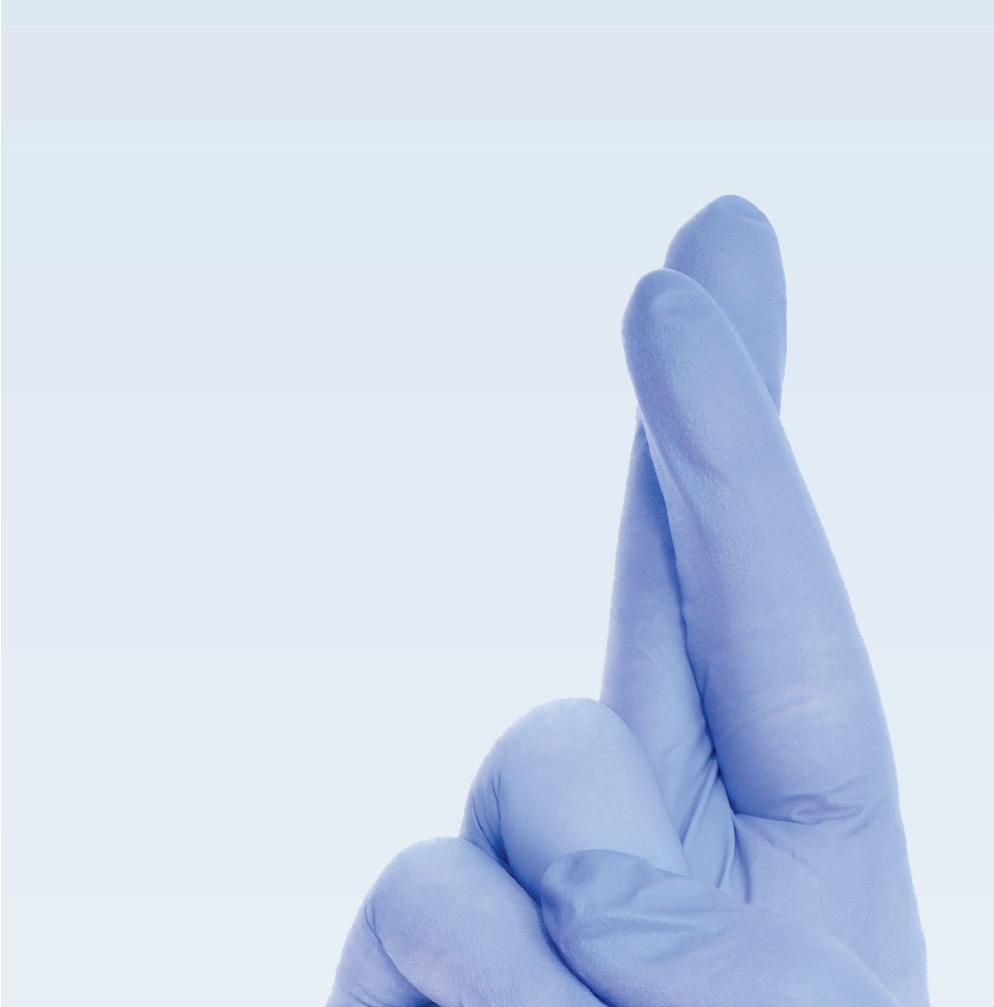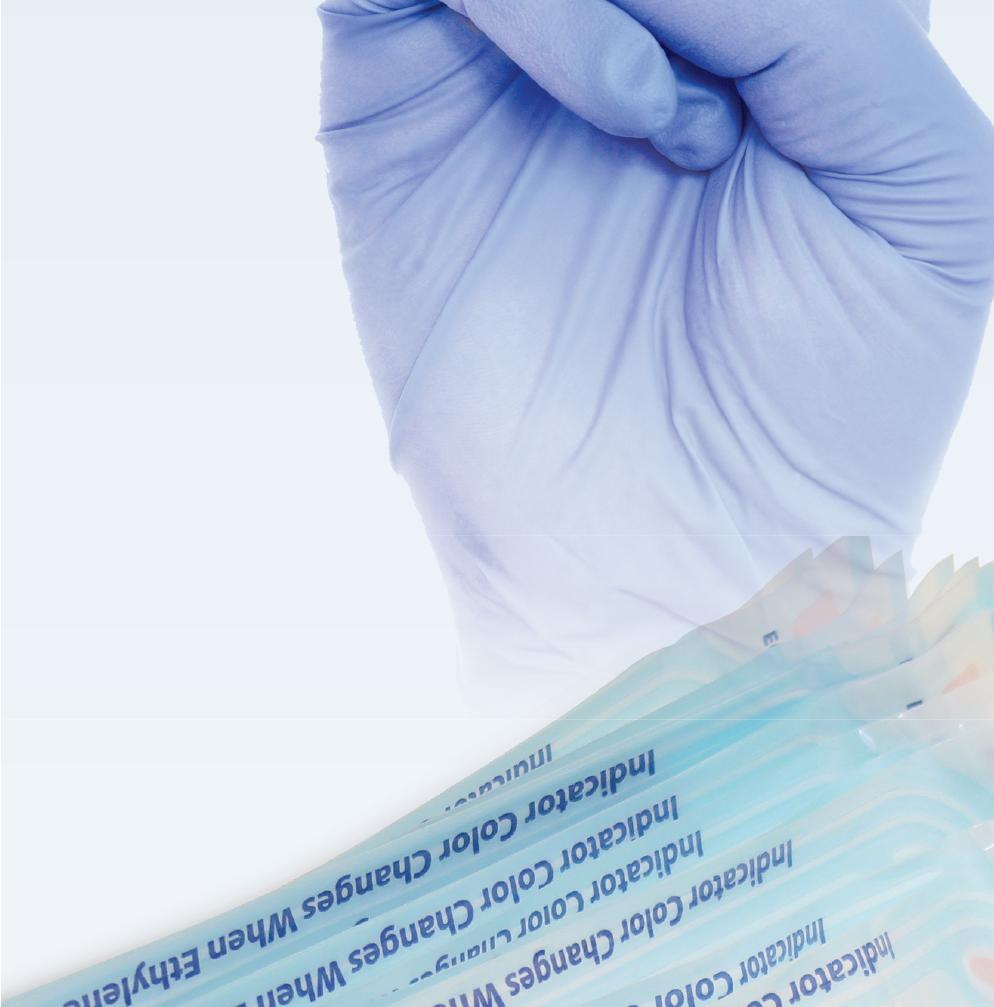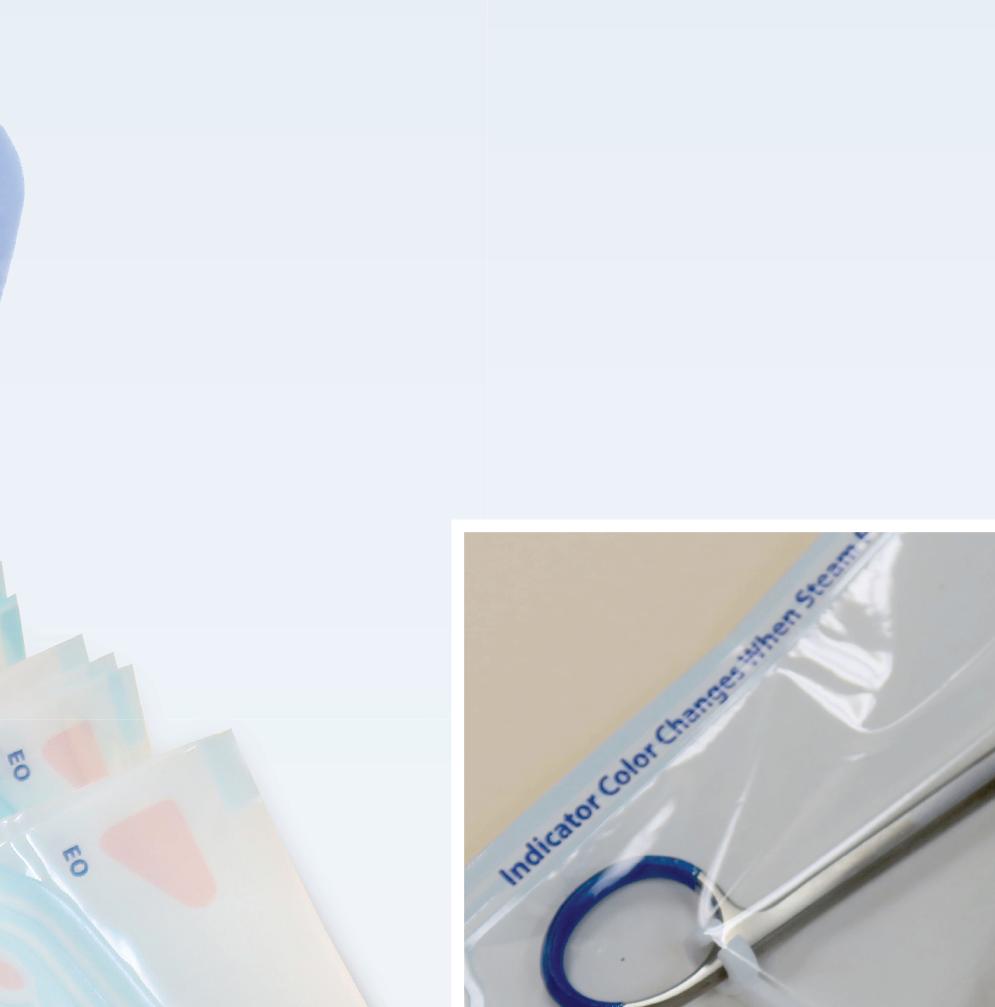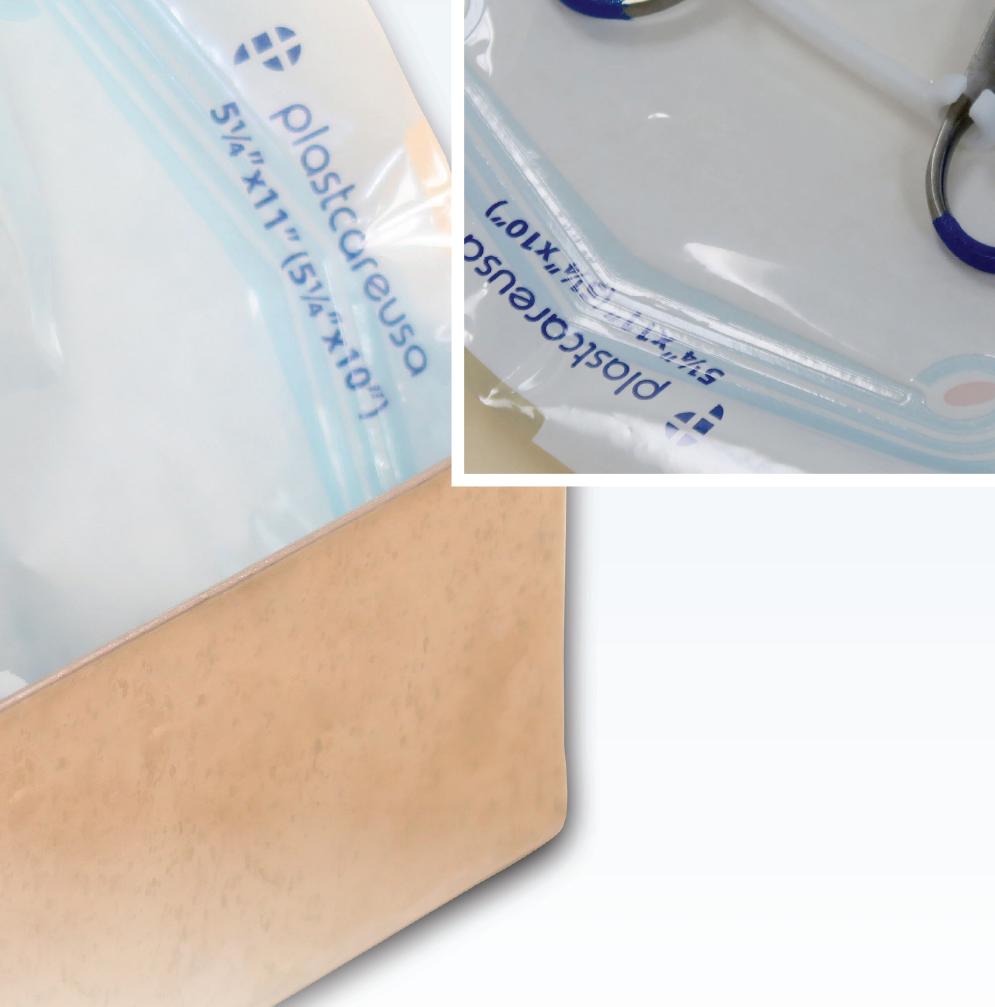TRAVEL NURSE CONS





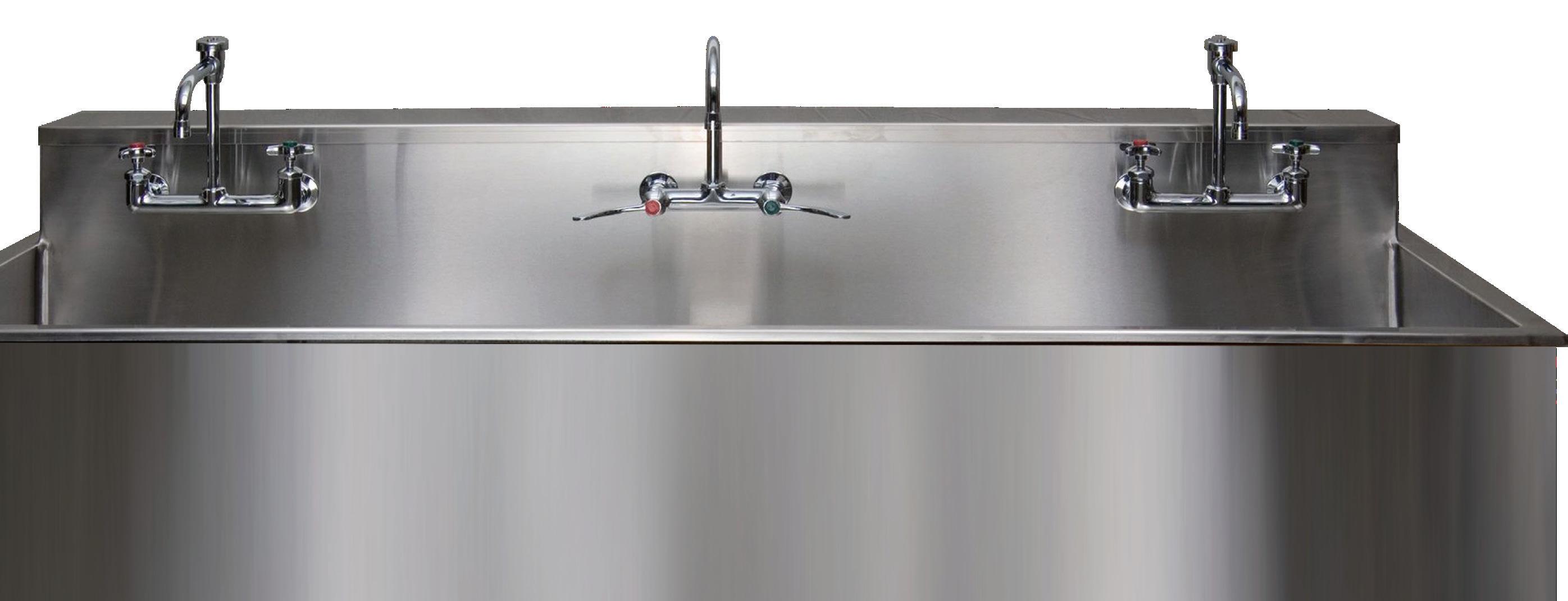

VISIT US AT AORN BOOTH #1616

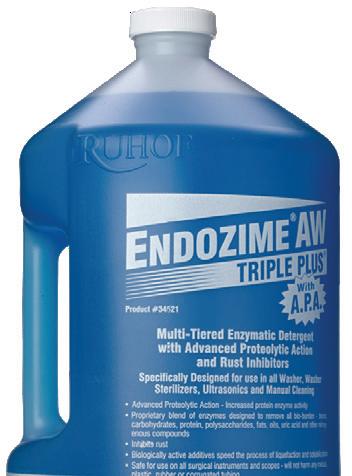
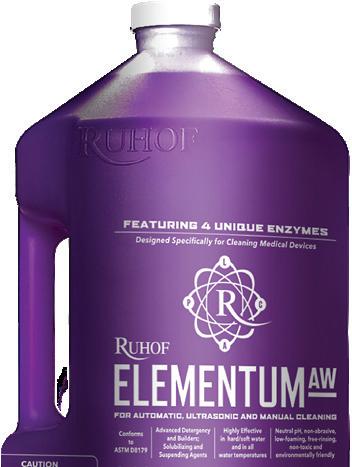
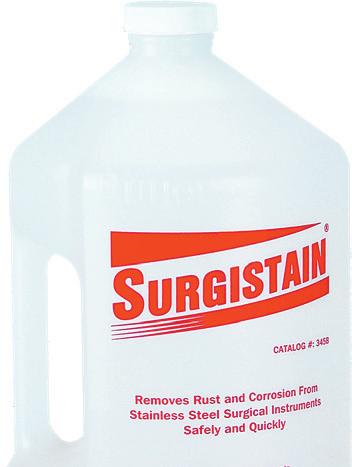
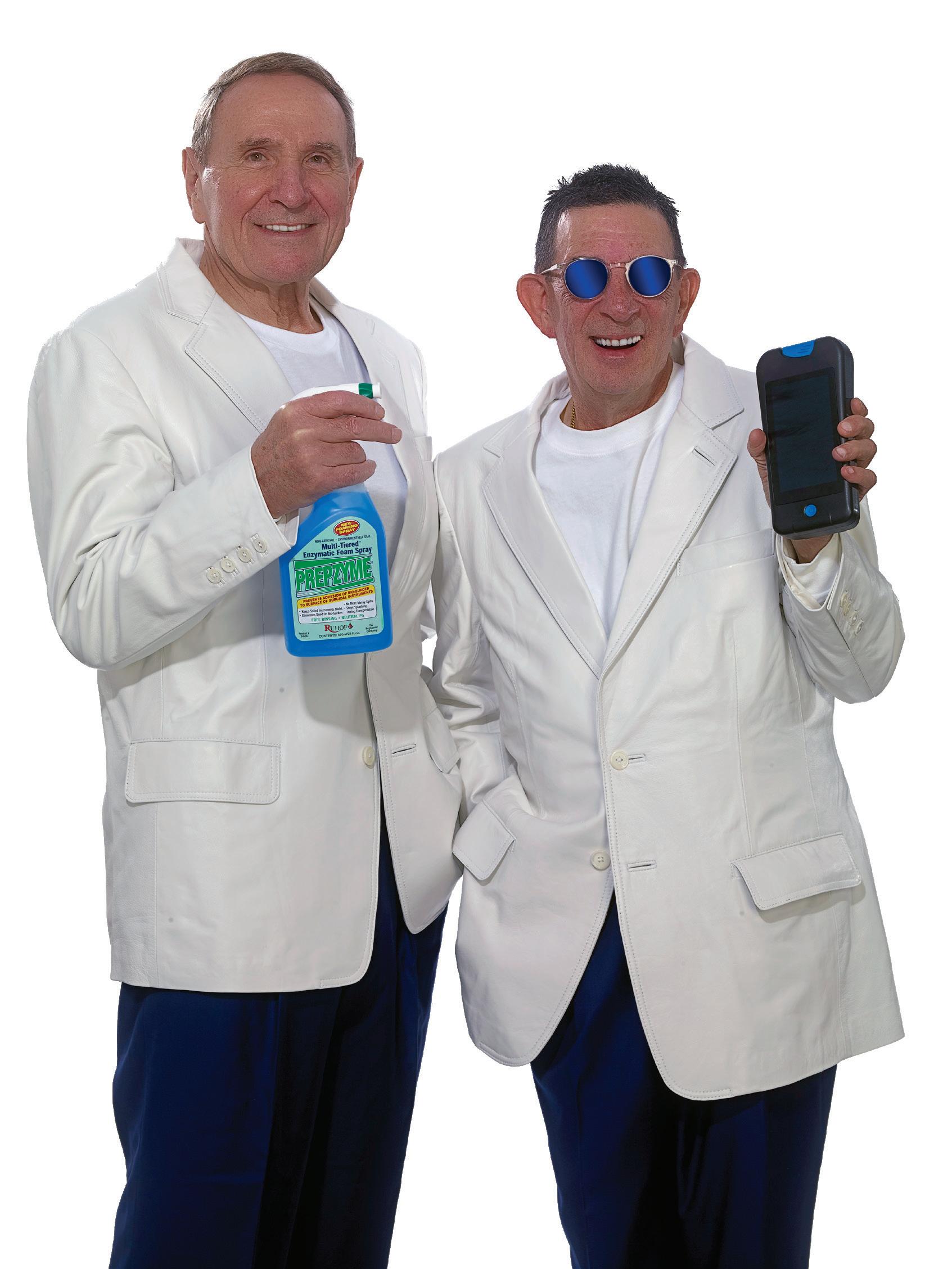






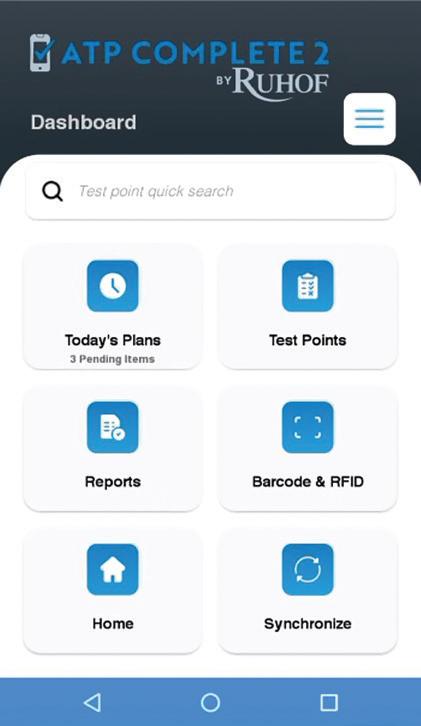
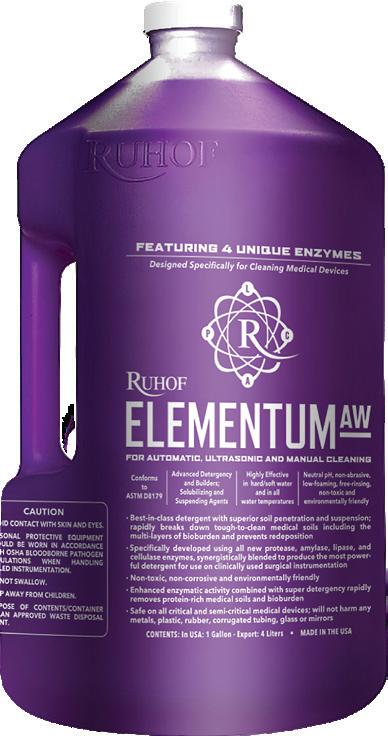




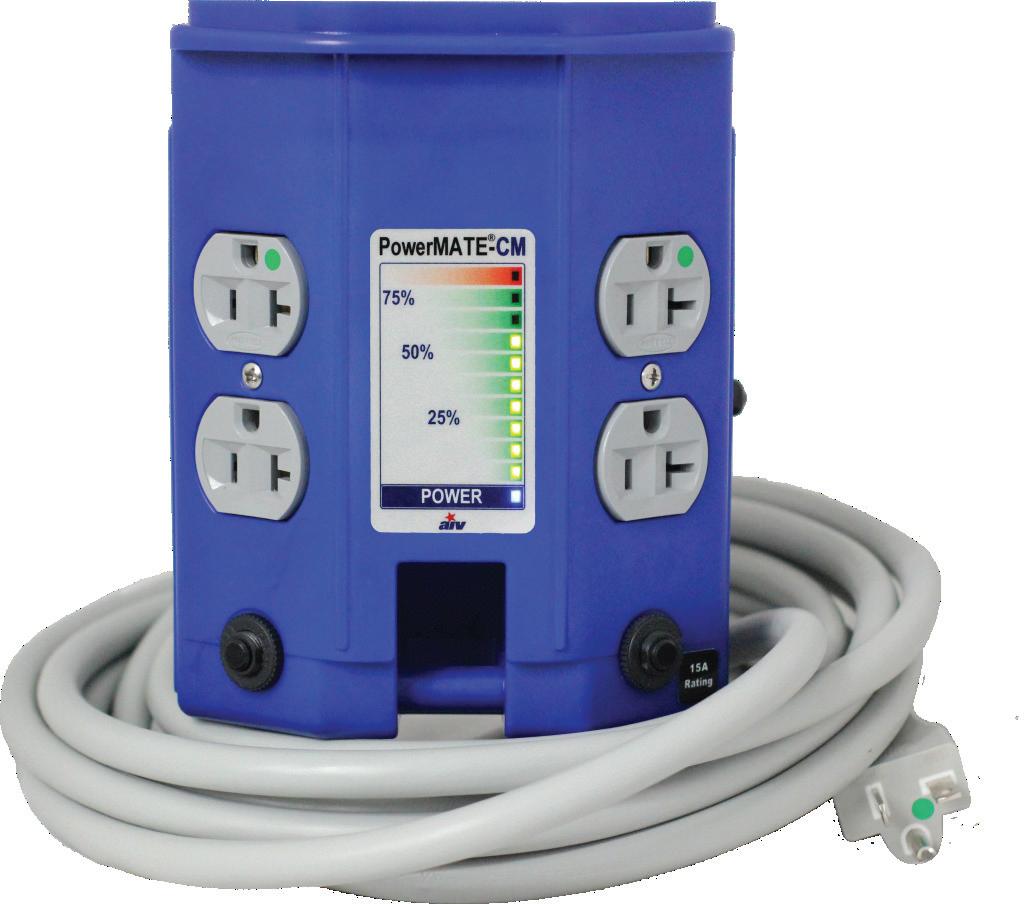
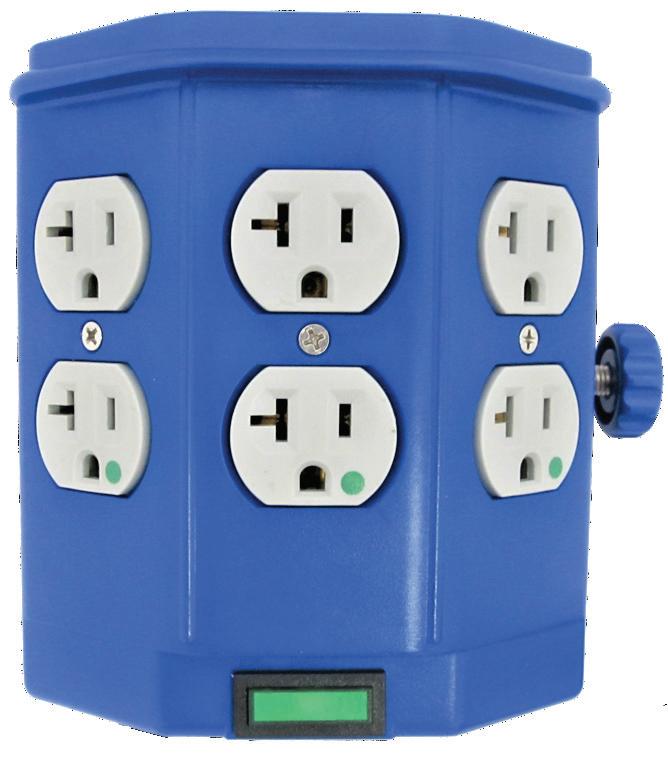






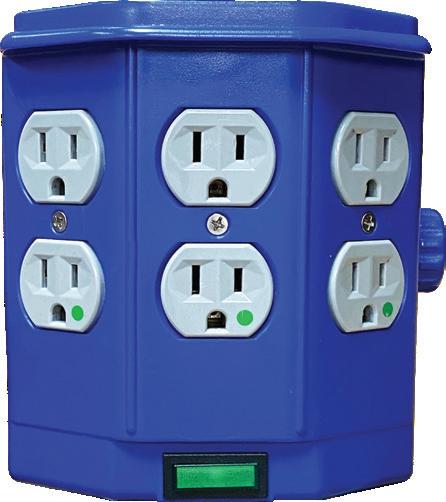
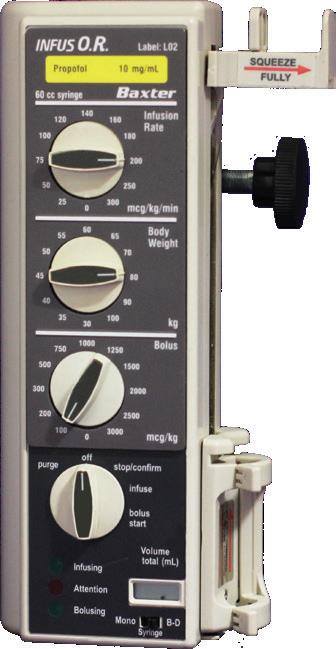
When the ultrasonic cleaner is supplying sufficient energy and condi�ons are correct, SonoCheck™ will change color. Problems such as insufficient energy, overloading, water level, improper temperature and degassing will increase the �me needed for the color change. In the case of major problems the SonoCheck™ will not change color at all.
Reveal the hidden areas of instruments with TOSI® - the easy to use blood soil device that directly correlates to the cleaning challenge of surgical instruments. TOSI® is the first device to provide a consistent, repeatable, and reliable method for evalua�ng the cleaning effec�veness of the automated instrument washer.
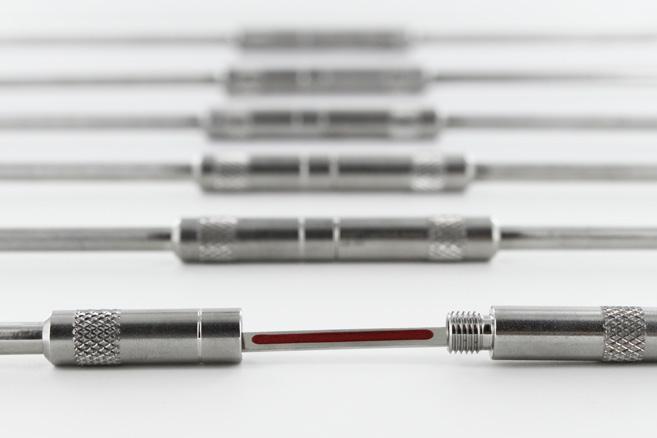
The LumCheck™ is designed as an independent check on the cleaning performance of pulse-flow lumen washers. Embedded on the stainless steel plate is a specially formulated blood soil which includes the toughest components of blood to clean.
Go beyond what you can see with all-in-one detec�on kits for blood or protein residue. HemoCheck™ is simple to interpret and indicates blood residue down to 0.1μg. The ProChek-II™ measures for residual protein on surfaces down to 0.1μg.



ALL OLYMPUS EVIS 100, 140, 160, 180 SERIES
LIMITED REPAIRS ON 190 SERIES SCOPES
BF - BRONCHOSCOPES


CF – COLONOSCOPES

PCF – PEDIATRIC COLONOSCOPE

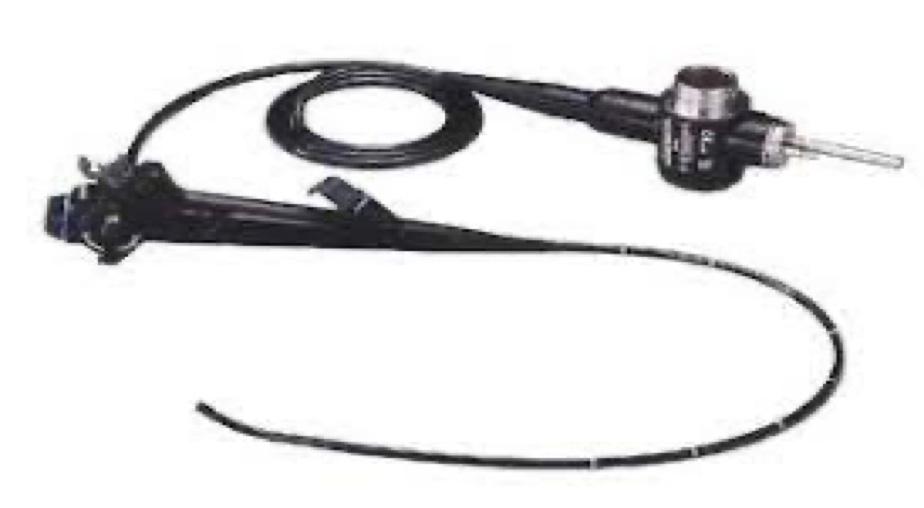


TJF - DUODENOSCOPES
WE ALSO REPAIR 100, 140, 180 SERIES VIDEO PROCESSORS AND LIGHT SOURCE

The global surgical equipment market is estimated to reach $44 billion by 2027.

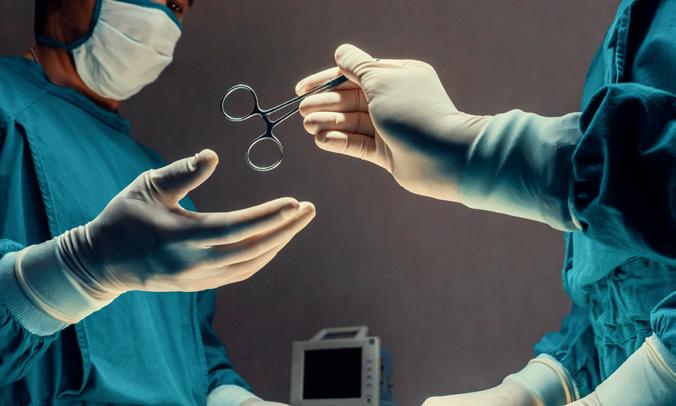

Travel nurses can plug schedule gaps with experienced nurses but there are also unique challenges associated with using them.
20
The status quo and bare minimum are unacceptable in the fast-paced, challenging sterile processing environment.
I’ve seen new and powerful solutions arise after people put their position on pause and consider an opposing point of view.
expressed in the
tisements herein are those of the writer and/or advertiser, and not necessarily those of the publisher. Reproduction in whole or in part without written permission is prohibited.
PUBLISHER
John M. Krieg john@mdpublishing.com
VICE PRESIDENT
Kristin Leavoy kristin@mdpublishing.com

VICE PRESIDENT OF SALES
Jayme McKelvey jayme@mdpublishing.com
EDITOR
John Wallace editor@mdpublishing.com
ART DEPARTMENT
Karlee Gower
Taylor Hayes
Kameryn Johnson
ACCOUNT EXECUTIVES
Megan Cabot
Emily Hise
DIGITAL SERVICES
Cindy Galindo
Kennedy Krieg
EVENTS
Kristin Leavoy
ACCOUNTING
Diane Costea
WEBINARS
Linda Hasluem
EDITORIAL BOARD
Justin Fontenot, DNP, RN, NEA-BC, FAADN Assistant Professor of Nursing at UL Lafayette
Natalie Lind, Education Director for the Healthcare Sterile Processing Association, HSPA
Pat Thornton, Periopeartive Consultant

Dawn Whiteside, MSN (Ed), RN, NPD-BC, CNOR, RNFA, Director of Education, CCI
Julie Williamson, BA Director of Communications, HSPA
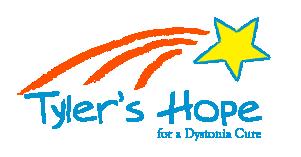
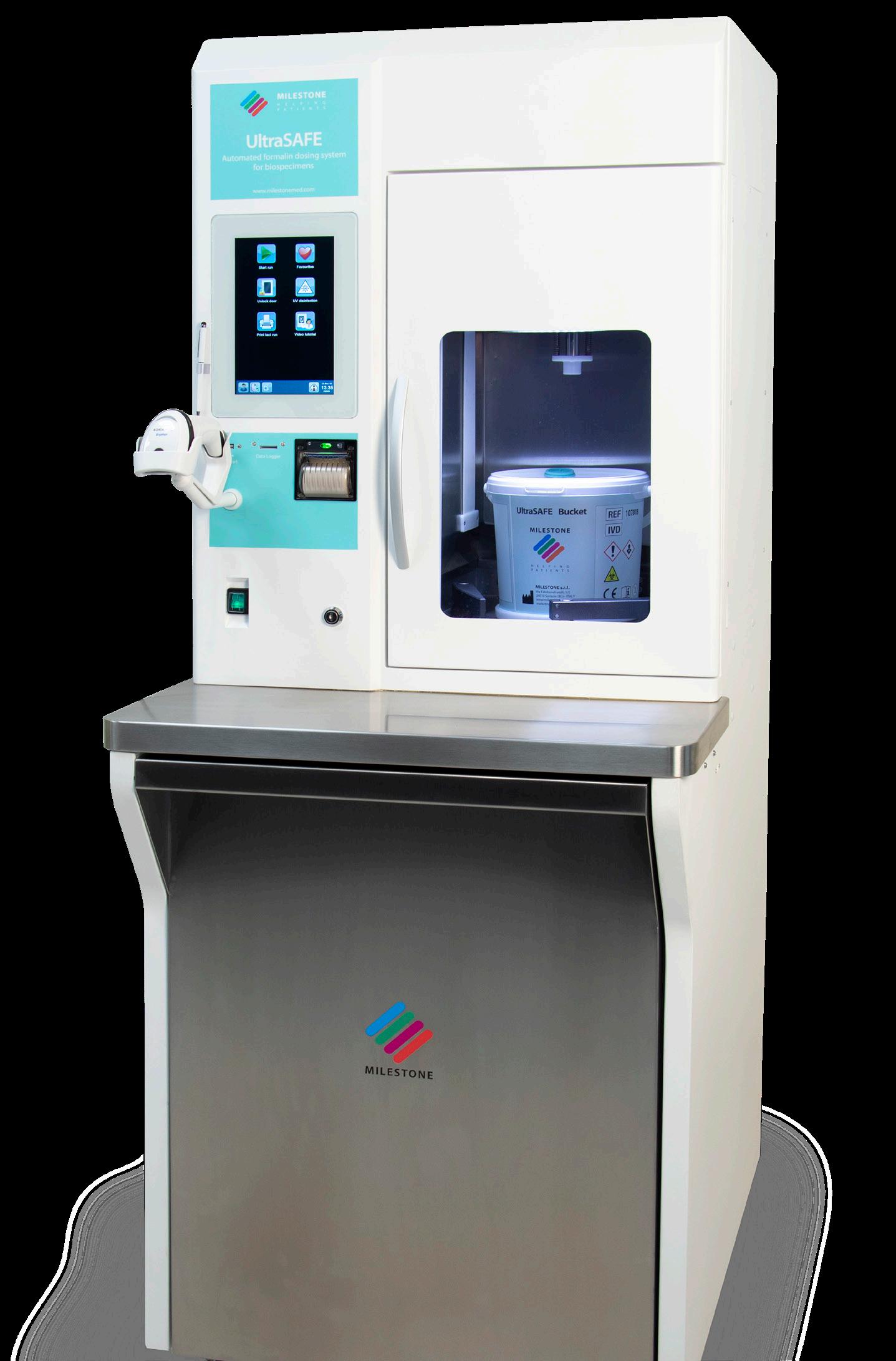
UltraSAFE is an innovative instrument for large biospecimens. With UltraSAFE, formalin is automatically dispensed based on a pre-set formalin ratio, eliminating fluctuating formalin volumes. UltraSAFE documents fixation time for more accurate and standardized results. In addition, UltraSAFE utilizes dedicated buckets which are high quality and easy to use. UltraSAFE eliminates inconsistencies and streamlines operations to make your life easier.
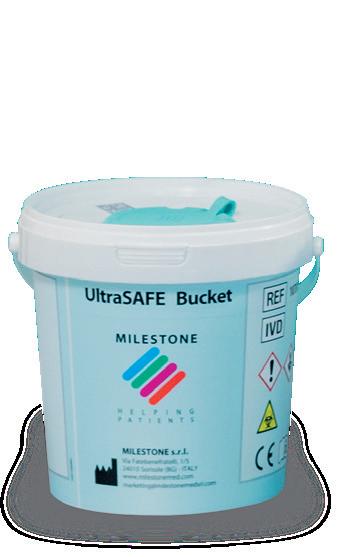


Eliminates formalin exposure
Reduces formalin spills
Utilizes high quality specimen buckets

Standardizes formalin ratio based on specimen weight
Documents time to fixation, weight and exact formalin quantity on a printed label
Xenex Disinfection Services has filed a De Novo petition with the U.S. Food and Drug Administration for medical device market authorization of its LightStrike+ ultraviolet (UV) room disinfection technology. The company’s patented device uses a xenon lamp to create broad spectrum UV light intended to quickly destroy pathogens on surfaces in health care facilities.
Xenex‘s LightStrike technology is currently being sold pursuant to an FDA enforcement policy that was issued to allow light-based disinfection products to be brought to market during the global pandemic (Enforcement Policy for Sterilizers, Disinfectant Devices, and Air Purifiers During the Coronavirus Disease 2019 (COVID-19) Public Health Emergency). The De Novo pathway allows for creation of an entirely new product classification and, if granted, will strengthen Xenex‘s position in the UV disinfection industry by obtaining FDA authorization to market LightStrike+ (the new iteration of the device) as a medical device. The filing includes substantial data on testing with the device and leverages the scientific evidence published in peer-reviewed articles about the efficacy of the LightStrike disinfection technology.
Harmful microorganisms can remain on surfaces in health care facilities, even after the best manual cleaning efforts. Many hospitals and health systems utilize LightStrike’s UV-C disinfection technology to achieve cleanliness by destroying pathogens missed during the manual room cleaning process. There have been more than 45 peer-reviewed, published studies in scientific journals demonstrating the effectiveness of the LightStrike disinfection technology, which is protected by 193 patents.
“When we started Xenex, UV room disinfection in health care facilities was novel. Over the course of time, proactive hospitals deployed our robots to disinfect their facilities and we’re extremely proud of the success those hospitals achieved. Today, room disinfection with LightStrike robots has become standard of care in many hospitals. The value and importance of what they’ve accomplished is such that we are submitting our De Novo petition to the FDA and we welcome the change in the UV room disinfection industry because it’s that important to patients and health care workers,” said Dr. Mark “Tuck” Stibich, founder and chief scientific officer of Xenex.
“LightStrike Germ-Zapping Robots have been deployed by more than 1,000 hospitals worldwide and we’re very proud that those hospitals have safely completed more than 35 million disinfection cycles,” said Morris Miller, CEO of Xenex. “We have been working closely with the FDA to describe to them our unique broad spectrum UV disinfection device, and we’re very excited to pursue this De Novo classification. Our hospital partners have been looking for clarity in the UV room disinfection market and we believe that this will help them make informed, evidence-based decisions.”
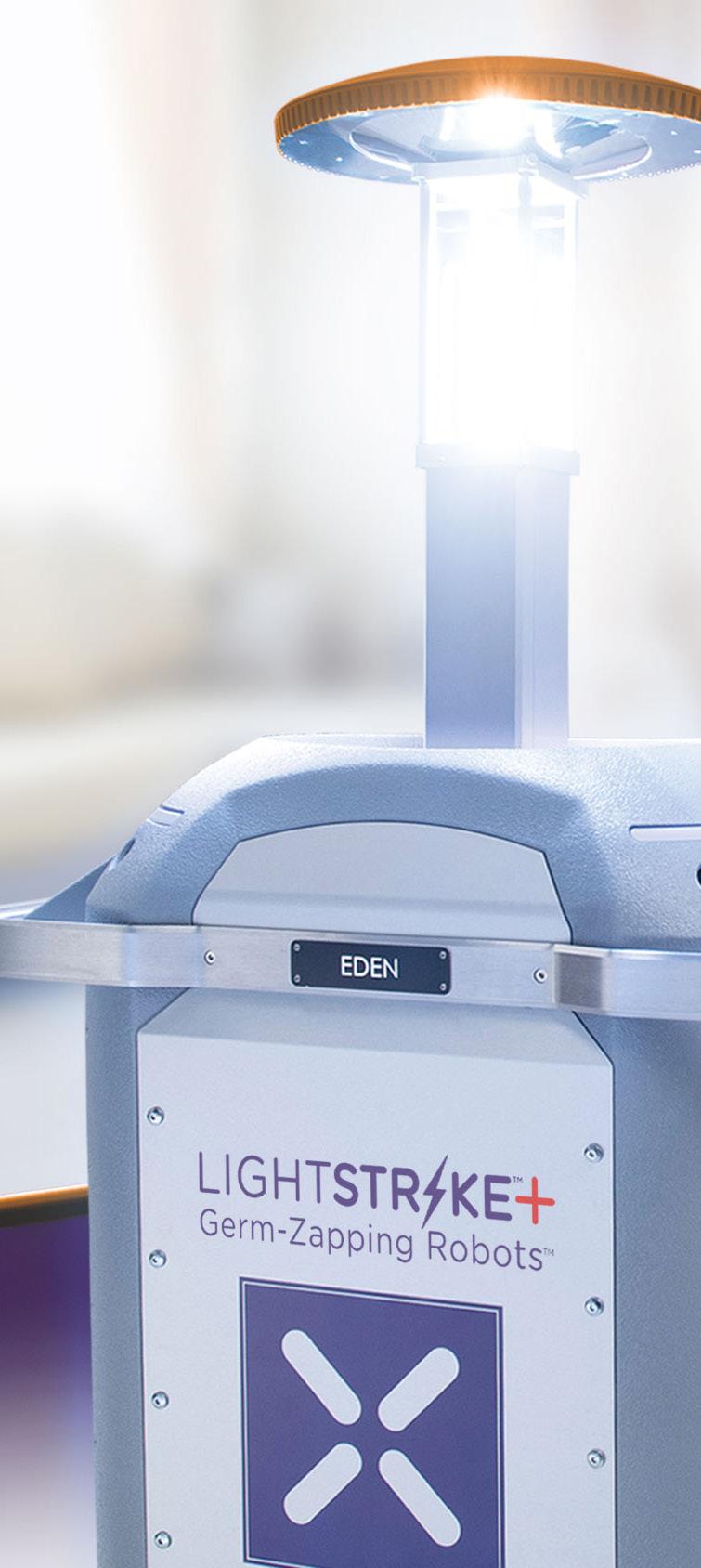


The Ambulatory Surgery Center Association (ASCA) proudly supports the reintroduction of the Outpatient Surgery Quality and Access Act of 2023. Congressmen Brad Wenstrup, D.P.M. (R-OH) and John Larson (DCT) reintroduced the legislation in the U.S. House of Representatives and Senators Richard Blumenthal (D-CT) and Bill Cassidy, MD (R-LA) introduced the legislation in the U.S. Senate.
The legislation specifically seeks to increase Medicare patients’ access to ambulatory surgery centers (ASC), ensure adequate reimbursement and provide better quality metrics across sites of care.
Provisions in the legislation would
• require the Centers for Medicare & Medicaid Services (CMS) to publish relevant quality data in a way that allows patients to compare quality across sites of service;
• eliminate the copay penalty Medicare beneficiaries pay for
certain Part B services when they are provided in an ASC;
• provide transparency regarding the criteria CMS is using to exclude procedures from the ASC Covered Procedures List;
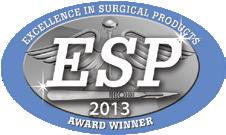
• add an ASC representative to CMS’ Advisory Panel on Hospital Outpatient Payment, which makes decisions that affect both hospital outpatient department (HOPD) and ASC facility fees and eligible procedures; and

• align the inflation update and budget neutrality adjustment for ASCs and HOPDs.

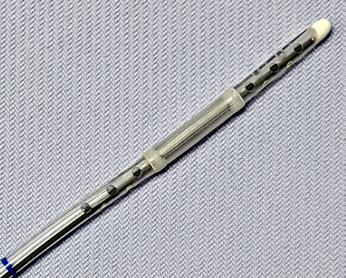

NEW – FDA CLEARED
• Vent the left heart during cardiopulmonary bypass surgery
• Securely positioned by inflating a soft positioning balloon in the LV
• Ensure drainage of air, blood and debris
• Disposable for one time use
• Keeps sterile tethered appliances on the surgical field from falling to the floor with 4 hook & loop closures
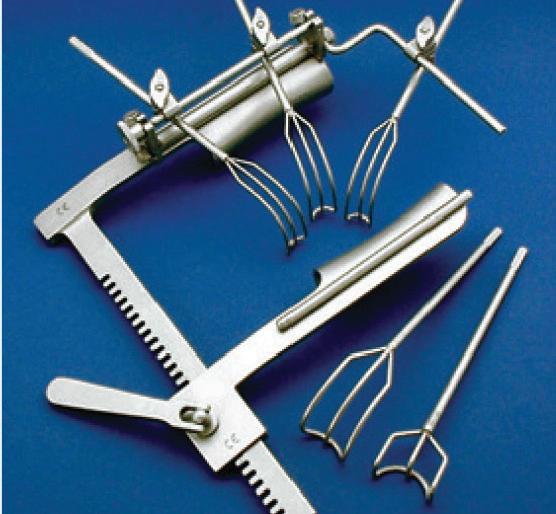
• Latex free self adhesive back for attachment to the surgical field
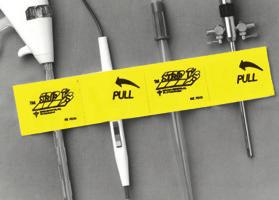
• Economical - Saves pre-op time

“We want to thank the sponsors of the Outpatient Surgery Quality and Access Act for this effort to reduce Medicare beneficiaries’ out-of-pocket costs and put the program on more stable footing,” said ASCA Chief Executive Officer Bill Prentice. “Increasing access to care in surgery centers will reduce Medicare expenses and free up dollars for other health priorities.” Cat
• Several sizes, configurations, colors
• Sterile shelf life 2 years
• Call for FREE samples
•
• Mitral Valve Repair
• Exceptional Exposure
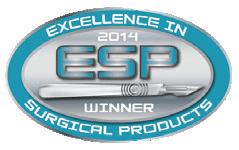
United Surgical Partners International (USPI), the largest ambulatory surgery platform in the country and a subsidiary of Tenet Healthcare, and Providence, a not-forprofit health system serving the Western U.S., have signed a new development agreement that will increase access to ambulatory surgical services across many communities.
USPI and Providence entered a joint venture partnership in 2004 in California, which has grown to five ambulatory surgery centers (ASCs). In late 2022, the relationship expanded to include two additional ASCs in Washington State.
“We are pleased to expand our agreement with USPI which allows us to increase access to more affordable ambulatory surgery services,” said David Kim, MD, chief executive, Providence Clinical Network. “We are committed to maintaining continuity of high-quality service to patients and the community, and to provide an
Vision Research, a leading manufacturer of digital high-speed imaging systems, has for the first time supplied an embedded Phantom high-speed camera for use within a medical device with U.S. Food and Drug Administration 501(k) clearance.
The device, Cytovale’s IntelliSep test, is a new diagnostic tool that provides clinicians with early indication of sepsis probability to support critical timesensitive clinical decisions, providing test results in under 10 minutes and contributing to rapid life-saving decisions.
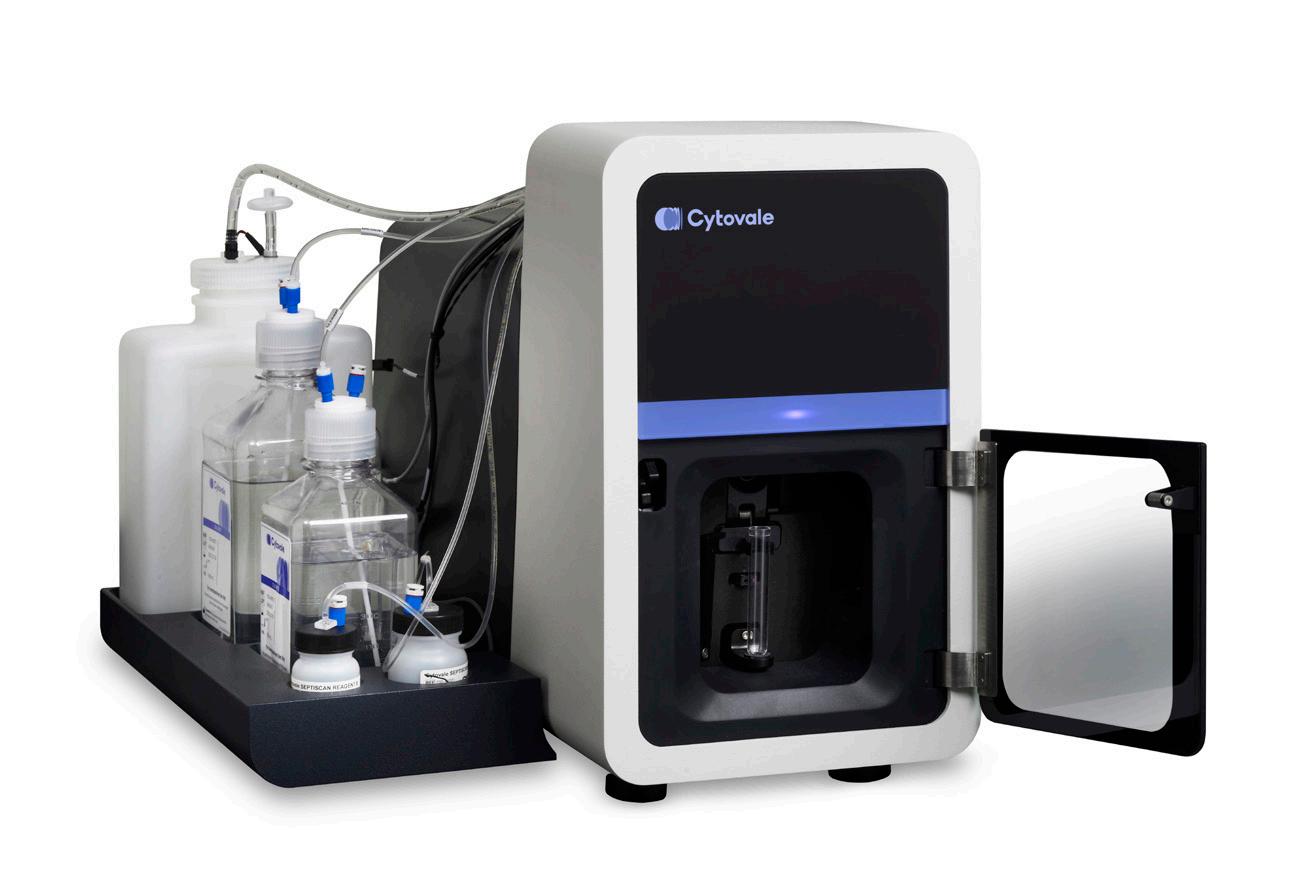
Critical to this groundbreaking diagnostic system is the Phantom VEO 710 high-speed camera, which resolves blood cells as they move through the microfluidics channel at 3 meters per second, requiring frame rates greater than 500,000 frames per second (fps). The VEO 710 employs a custom CMOS sensor with 7 Gpx/s image throughput and supports the fast offload of data,
exceptional work environment for ASC teams.”
Under the terms of the new development agreement, USPI and Providence will focus on enhancing the quality, convenience and access to cost-efficient ASCs and partner together in several existing Providence ASCs across California and Washington. These ASCs offer a range of multi-specialty surgical procedures in which USPI has established expertise, including musculoskeletal, ENT, gastrointestinal and general surgery. USPI and Providence will also aim to develop additional ASC joint venture partnerships in select markets across the Western U.S. USPI will also provide management services for the additional centers.
The execution on the expanded partnership is already in progress, with numerous ASC opportunities currently under evaluation and expected to be added throughout 2023 and 2024.
contributing to IntelliSep’s fast, 10-minute sample turnaround time. It is also a well-established camera used in a variety of industries and applications, with the proven reliability necessary for long-term success.
For more information, visit phantomhighspeed.com.

Inaccurately recording the start of anesthesia care during a procedure is common and results in significant lost billing time for anesthesia practices and medical centers, suggests a study presented at the American Society of Anesthesiologists’ ADVANCE 2023.
The anesthesia start time (AST) must be documented from a computer logged into the electronic health record (EHR), and typically occurs once the patient is in the operating room (OR). However, the anesthesiologist meets with the patient prior to their arrival in the OR and begins tasks that are vital to the procedure – such as administering pre-medication and attaching monitors – and that time typically is not recorded. Depending on the patient and procedure, adding two to five minutes to the AST when logging it would account for the preparation and transit time, researchers say.
“These seemingly minor inaccuracies of recorded AST





can cost medical centers and anesthesia practices hundreds of thousands of dollars in lost revenue,” said Nicholas Volpe Jr., M.D., MBA, lead author of the study and an anesthesiology resident physician at Northwestern University McGaw Medical Center, Chicago. “We suspect most anesthesiologists are unaware that they aren’t recording AST accurately. It’s not a result of negligence, but rather reflects that workflow hasn’t been optimized for accuracy.”
For the study, the researchers analyzed 40,312 procedures involving anesthesia – which occurred between November 1, 2021 and October 31, 2022 – at a single academic center. In 27,771 of the cases (68.74%), AST was recorded as starting once the patient was in the OR, without factoring in the preparation time. Using the national average charge for anesthesia time, the missing time translated to $638,671.57 in lost revenue for the year, the researchers determined.

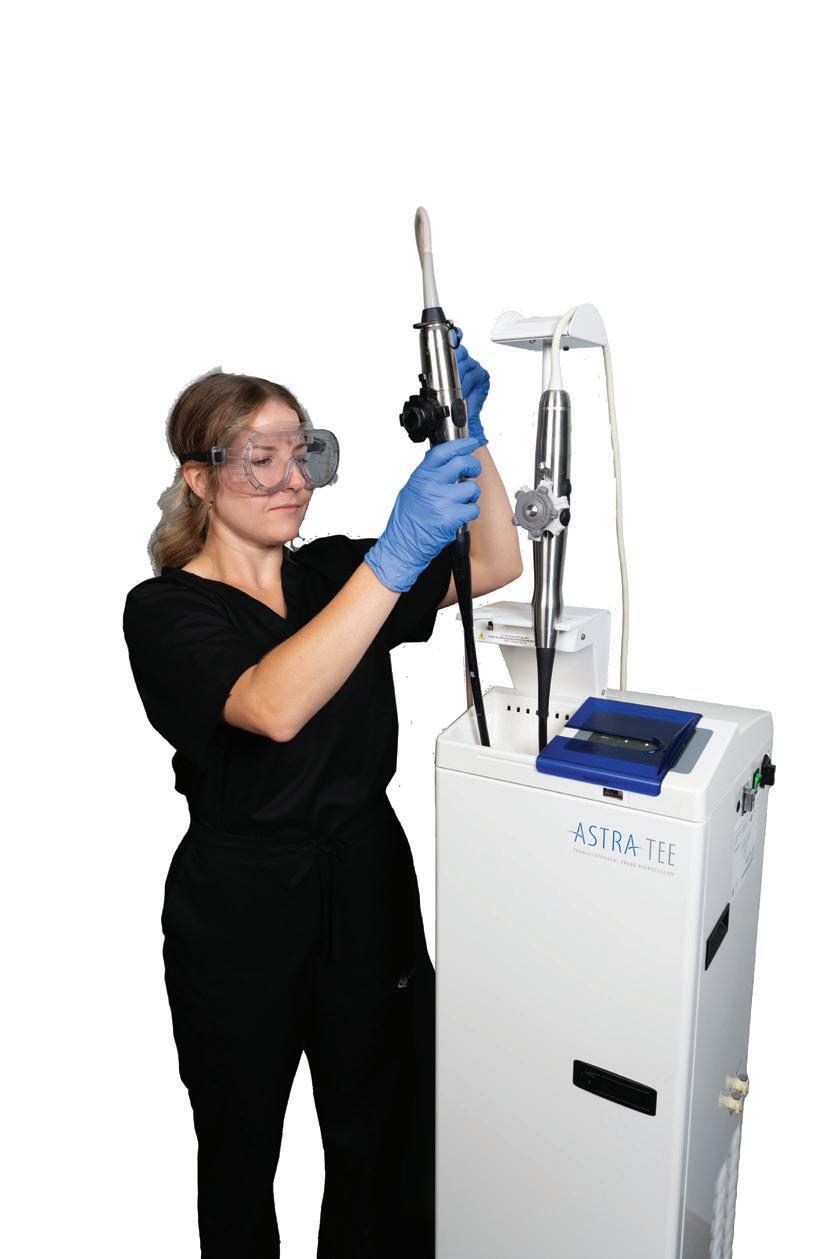



Iam very pleased to present my first column in this new series for OR Today. In February, I wrote my last column in another series for this publication, but I am now opening a new chapter. When writing from the perspective of my previous employer, the Competency and Credentialing Institute, my writing had focused on certification and credentialing issues. Going forward, I will concentrate on workforce and education issues which impact surgical services. In presenting this information I hope to give you pertinent, useful information that will be helpful in your practice.
All of us have seen recent news articles about workforce shortages in the United States and more specifically about shortfalls amongst health care workers. News about nurses going on strike and union organizing efforts with nurses are becoming increasingly common. Staffing deficits in the operating room (OR) are front and center for perioperative leaders. The American Hospital Association (AHA) recently published a white paper titled “The 2023 Health Care Workforce Scan.”
One sentence from the AHA Report (2023, p. 2) resonated with me, “A strong and resilient workforce is the backbone of our hospitals and health systems.” That phrase is not a revelation for any health care leader but as this paper points out we are
faced with some unprecedented challenges. The ageing U.S. population presents two issue: a greater demand for health care services including surgery and more workers retiring from the workforce (p. 3). Subsequent to the pandemic the Labor Force Participation Rate, a measure of those actively working or seeking work, has declined. In short, less people are working even in tight labor markets where they might have leverage for higher wages.
The AHA authors go on to state that, “Our education pathways are not where they need to be to replace people retiring or leaving the field.” I agree with that statement. As OR leaders we have seen many experienced staff leave the OR and some perioperative nurses experienced job loss and furlough for the first time in their career during the pandemic. The stressful, demanding nature of the OR workplace is well-documented (Cramer et al, 2022). This reality hampers our recruiting efforts.
At NIFA, we believe these challenges also present opportunities as we are compelled to seek out new approaches in our education and training efforts. In a broad sense we are faced with workforce development challenges as the familiar paths to the OR, such as Diploma of Nursing programs, no longer exist. This presents the prospect of developing new paths such as pre-licensure perioperative courses for nursing students and using new methods for the education and training of
perioperative nurses. We also see the opportunity for new partnerships between stakeholders such as employers, advocacy groups and schools.
I have pored over the articles listed in the references. Consider reading these sources to get some perspective on our collective challenges. To address these issues, we must be open to innovative solutions and new partnerships for the overall good of our health care systems. In the coming months, I will share more thoughts on possible solutions specific to the OR setting.
American Hospital Association (2023). 2023 Health Care Workforce Scan. https://www.aha.org/system/files/ media/file/2022/11/2023_AHA_Health_ Care_Workforce_Scan.pdf
Cramer, E, Stucky, C, Stobinski, JX, Wymer, J. & Boyle, D. (2022). Differences in Perioperative Nurse Job Satisfaction by Specialty Certification Status. Journal of Perianesthesia Nursing (JOPAN). DOI: 10.1016/j. jopan.2022.04.018
Saver, C. (2022, August 19). Survey: Surgical volume returns for many ORs, but staff shortages remain. OR Manager. https://www.ormanager.com/ survey-surgical-volume-returns-formany-ors-but-staff-shortages-remain/ Saver, C. (2022, September 27). Survey: Some improvement in satisfaction, but stagnant compensation. OR Manager. https://www.ormanager.com/surveysome-improvement-in-satisfaction-butstagnant-compensation/
B
uilding a collaborative culture. Preventing RSIs. Fostering a work-life balance in new nurse leaders.
While those are just some of the challenges nurses currently face, AORN is determined to turn them (and more) into opportunities to learn at Global Surgical Conference & Expo, April 1-4, in San Antonio. The association developed four days of perioperativefocused educational content spread across general sessions, handson simulations, learning labs and a new education hub dedicated to ambulatory surgery. Overall, AORN Expo 2023 offers perioperative nurses and leaders access to about 200 continuing education contact hours that will advance their knowledge of evidence-based practice.
“We have been using the theme ‘No Limits’ to describe the conference because we believe perioperative nurses have endless opportunities for learning and professional development,” said AORN President Vangie Dennis, MSN, RN, CNOR, CMLSO. “We are very aware of the challenges nurses face, and we make every effort to support their success and the future of the perioperative profession. That is why it is vital that we come together to learn, work to improve the quality of patient care and have fun with our colleagues.”
AORN Director of Perioperative Education Colleen Becker, Ph.D., MSN, RN, CCRN-K, agreed.
“We know nurses and leaders are grappling with staffing shortages, learning the skills specific to periop care, and staying up to date on evidence-based practice,” Becker said. “Our planning committee analyzes practice priorities, and we develop our content based on AORN’s Guidelines for Perioperative Practice, member feedback, the latest trends and new technology.”
12 Learning Paths
AORN Expo is recognized as the largest perioperative nursing conference in the world and, each year, the association develops

“We are very aware of the challenges nurses face, and we make every effort to support their success and the future of the perioperative profession. That is why it is vital that we come together to learn, work to improve the quality of patient care and have fun with our colleagues.”
Vangie Dennis, AORN President, MSN, RN, CNOR, CMLSO
content tailored to nurses from all career levels, including leadership. Because the Guidelines for Perioperative Practice are constantly evolving, nurses know if they don’t stay on top of learning opportunities, they can easily fall behind. And that could compromise patient care.
AORN Expo in San Antonio includes 12 specialty break-out education tracks including evidencebased practice/research, sterile processing, risk management, infection control and prevention, and ambulatory. This year, attendees will find session topics such as “Millennial Leadership in the OR: The Collaborative Workstyle,” “Stop the line: Preventing RSIs,” and “A Journey to Self-Publishing: Impacting Health Literacy.”
AORN Guideline authors, industry experts and nationally recognized speakers lead the sessions, which also extend into the Expo Hall. The Expo Hall, one of the largest surgical products trade shows in the country, connects nurses to medical device representatives and offers them a chance to




touch and test the latest technologies and services for the OR.
But it doesn’t stop there. Through Pfiedler Education, nurses have access to virtual simulations and exhibitor-led education on more than 25 topics ranging from pressure injury prevention and surgical skin antisepsis to lateral positioning. Organizers also added two new learning labs this year designed to deliver quick-fire hands-on education on 14 topics such as perioperative pressure injury prevention and breaking down barriers between the
“The Expo Hall provides meaningful opportunities for nurses to learn and also speak with vendors,” Dennis said. “They’re reinforcing their skills through engaging training sessions while also earning credit hours.”
For nurse leaders, AORN presents an annual Leadership Summit, often referred to as a conference within the conference. Organizers tailor sessions for perioperative nursing executives and emerging leaders looking for solutions to their daily challenges and to learn new management strategies. This year’s schedule includes sessions on creating healthy work cultures, recruiting/retaining staff, managing a multi-generation workforce, and improving perioperative care for transgender and gender-diverse people.

Meanwhile, 2023 also marks the introduction of the new ambulatory hub at AORN Expo.
Outpatient facilities face unique
Vangie Dennis AORN President, MSN, RN, CNOR, CMLSOchallenges and operate with different regulatory requirements (compared to hospitals) and, often, limited resources, so organizers decided to create an entire space dedicated to ambulatory surgery. The sessions address hot topics for leaders and clinicians including expanding service lines, cultivating a culture of safety and sharing research on clinical practice outcomes. Some of the topics include “Infection Prevention in the ASC Environment,” and “Designing Ambulatory Surgery Centers for the Future.”
The new hub is just part of AORN’s commitment to the ambulatory nursing practice.
AORN launched its new ambulatory division in the beginning of 2023 with a goal of supporting outpatient surgery facilities by offering clinical education, reporting resources, networking opportunities


and connecting industry partners to outpatient leaders. And that’s in addition to its current ambulatory surgery solutions which include online courses that are specific to the setting.
“Our goal is to create a larger community and build more resources so our members can learn from national experts and connect with their peers to discuss the challenges and solutions they experience on the job,” Dennis said. “We have a growing population of nurses in the ambulatory setting, and they are in desperate need of high-quality education related to important issues such as operational efficiency, revenue management and regulatory compliance.”
Mentoring the Next Generation AORN has resources in place for members – both at AORN Expo and

throughout the association – focused on helping nurses entering the profession or looking for professional development. Each year, association members receive a discount on conference registration along with more than 200 contact hours, guideline implementation tools, career resources and more benefits to support their practice.

Nursing students who attend AORN Expo receive a complimentary registration and a one-year AORN student membership. AORN also created a special program during the last day of Expo where students can practice hands-on activities (think gowning and gloving, surgical prepping, preparing a sterile field, and handling instrumentation). And in the afternoon of April 4, they’ll have access to an exhibit floor session exploring the complexity of

surgical products and equipment.
Nurses can also connect with a mentor at AORN Expo.

At the conference, nurses can sign-up for AORN’s Member Mentor Program or meet their match in person. The program pairs nurses with a mentor for a year and offers a collection of resources that help establish program goals and focused conversations. For attendees looking for something less formal, the conference hosts a first-time attendee lounge (where attendees can network with veteran nurses), and speed networking activities.
“We have built in plenty of networking opportunities for nurses and leaders to connect and grow their professional support system,” Dennis said. “We are also excited about the host city of San Antonio and the night events and parties we have planned. It all contributes to building strong connections and showing everyone that we are in this together.”
Next year, AORN will present its Global Surgical Conference & Expo in Nashville – save the date – March 9-12, 2024. Registration opens in October 2023.


“Our planning committee analyzes practice priorities, and we develop our content based on AORN’s Guidelines for Perioperative Practice, member feedback, the latest trends and new technology.”
Colleen Becker, Ph.D., MSN, RN, CCRN-K, Director, Perioperative Education, AORN
Colleen BeckerPh.D., MSN, RN, CCRN-K, Director, Perioperative Education, AORN
T he status quo and bare minimum are unacceptable in the fast-paced, challenging sterile processing (SP) environment. SP professionals across all titles and experience levels must strive to improve in their roles, share their knowledge, and push forward to elevate service and promote patient safety. Many opportunities exist for SP employees to sharpen their skill sets, boost their confidence and encourage their peers to do the same.
For SP technicians, the frontline employees in the department, continuing to grow and advance professionally is the best way to become one of the most respected, trusted and well-rounded team members in the department – and earning that trust and respect will help position technicians for leadership roles and other advancement opportunities. What follows are some effective ways SP
professionals can position themselves for enduring success within the department and broader discipline.
• Stay focused on excellence – SP technicians need to function as a strong team, but it is important to distance oneself from those who do not demonstrate a commitment to quality, safety and best practices. Many of us have worked with someone who does just enough to get by but doesn’t aim higher in the level of service provided. We may have also worked alongside a quality-focused teammate who is nonetheless negative in the way they communicate, routinely complains or, perhaps, downplays their departmental peers’ contributions. When working with challenging individuals, it is often beneficial to limit communication to workrelated matters and strive to maintain a positive approach to addressing departmental problems and solutions. We cannot make our colleagues do the right thing, but serving as a model for quality, safety and best practices is an effective way to indirectly mentor and encourage
others.
• Identify personal strengths and weaknesses – We each have unique skills and traits that help us succeed in our roles (and can help others become more successfully) and we also have areas in need of improvement. Being honest about where we shine and where we fall short is crucial to helping us grow and advance in our professional journeys. A strong natural leader who exudes patience, confidence and empathy in the role, for example, could make an effective lead technician, supervisor or even manager or educator. An efficient worker who is keenly focused on the task at hand but struggles to communicate effectively with peers or customers, or who readily expresses frustration and anger, will benefit from sharpening their verbal communication skills, especially if seeking a leadership role. Writing down one’s personal strengths and weaknesses and identifying ways to leverage the positives and improve upon the negatives can be especially effective. Chapter involvement, which offers both educational and networking opportunities, is just one
way SP professionals can level up in their careers. Are you considered “the expert” in a certain departmental function and would like to gain more speaking experience? Try submitting a proposal for an educational session. Are you good with a camera or computer? Consider assisting the chapter in those important areas? Leaders and prospective leaders can also gain valuable experience serving on the chapter board of directors. Simply attending educational events also provides valuable networking opportunities and the ability to ask questions and share best practices.
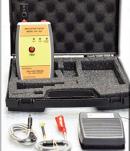
• Stay inquisitive – Throughout our careers, many of us have had questions but either assumed it wasn’t the best time to ask or were afraid to ask for fear of judgment or embarrassment. Asking questions leads to some of the best

learning opportunities, and every SP professional (including those who are most experienced) must never stop growing in knowledge. Education should be a perpetual pursuit, and so should sharing our knowledge with others.
• Escape the comfort zone – Many SP professionals are reluctant to leave their comfort zone and seek new opportunities to demonstrate knowledge and expertise. Sometimes, staff members wait for others to speak up, and critical time could be lost in correcting oversights or possible conflict. Reaching beyond our self-imposed boundaries can seem unpleasant and unsettling; however, when we do, we open ourselves to new experiences, insights and opportunities for improvement, and we may also be more inclined to share our knowledge with others.
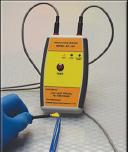

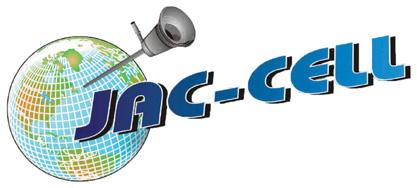
All SP professionals should stay committed to deepening knowledge and skill sets, and this is true regardless of title or experience level. Even the most senior leaders must continue to learn and grow and encourage their teams to do the same. Striving to stay positive, professional and quality-focused, even during the most challenging times, helps build trust, confidence, better departmental and interdisciplinary relationships and, above all, ensures that safety service and quality outcomes remain the top priority.
– Tony Thurmond, CRCST, CIS, CHL, FCS, serves as central service manager at Dayton Children’s Hospital. He is also an HSPA pastpresident and currently serves on HSPA’s Board of Directors.
















A pair of researchers from the School of Nursing at the Federal University of Minas Gerais in Belo Horizonte have noted that sterile processing departments studied in Brazil continue to take grave risks in their use of brushes when cleaning flexible endoscopes.
Their research study, “Criteria for the Use, Processing, and Disposal of Flexible Endoscope Cleaning Brushes,” was published in BI&T , the journal of health technology and sterilization from the Association for the Advancement of Medical Instrumentation (AAMI).
“Brushing is an essential step … and can be impaired by external factors, including pressure to clean equipment quickly so it can be returned to patient care, the force used in cleaning, inattention to detail, inadequate time spent cleaning, poor training, and omission of proper cleaning due to lack of knowledge of or commitment to the importance of the activity,” the researchers wrote.
Over the course of six months, Professor Adriana Cristina de Oliveira, Ph.D., and Naiara Bussolotti Garcia, MSc, surveyed the sterile processing staff at 51 endoscopy facilities in Brazil. They determined that, while more than half of the facilities used disposable brushes when cleaning device channels, none of the faculties actually disposed of these brushes after use.
Rather, 70% of the facilities reported discarding disposable brushes after noticeable bristle wear, 20% discarded the brushes at the end of a single workday, and 10% reportedly had no disposal protocols at all. When the researchers then inspected 10 hospital sterile processing departments that regularly repurpose flexible endoscopes, only one was equipped with brushes that had no signs of wear or damage.
Oliveira and Garcia explained how current processing guidelines, including the FDArecognized standard ANSI/AAMI ST91:2021, Flexible and semi-rigid endoscope processing in health care facilities, recommend using disposable cleaning brushes which are designed to be discarded after a single use.

“However, our results showed that even brushes marketed as disposable after a single use were being reused in the facilities studied. This increases the risk of damage and contamination and diverges from the purpose of singleuse brushes,” they wrote. The pair observed that damaged brushes may not adequately remove residue from the channels of an endoscopic device before its next step in reprocessing, increasing the risk of contamination and patient infection.
Additionally, the researchers observed that, “without wellestablished criteria for reuse,” even the facilities using brushes designed for reuse did not have an established routine for cleaning brushes between
uses, despite device instructions for use (IFUs) calling for it. In fact, the researchers observed other disregard for instruction during their in-person inspections, including the use of kitchen sponges and other domestic supplies for the cleaning of endoscope channels.

“These sponges have the potential to detach lint and retain moisture, which … increases the risk of adverse events in patient care,” the researchers noted with concern.
So, is there a solution for these Brazilian facilities? Can they serve as an example of how sterile processing departments can improve across the world? The authors called on manufacturers to help lift this burden, validating the manual cleaning processes for their devices and writing clear and easy-tounderstand IFUs. They wrote that the survey, while small, “indicates the urgent need” for hospitals to conduct internal audits and improve training regarding the acquisition and care of endoscope processing equipment.
Prevention of surgical site infections (SSI) is a key focus in health care. Two to four percent of the surgical procedures performed annually result in the adverse event of SSI or complication. That percentage may sound small, but based on more than 10 million surgeries, it represents 200,000 to 400,000 individuals. The Agency for Healthcare Research and Quality (AHRQ) estimates that those infections claim the lives of 6,000 to 12,000 people and are the leading cause of hospital readmissions.1 In an area of practice with high risk such as surgery and sterile processing, there is simply no room for error.
Because of the direct and significant impact on patient care, infection prevention practices are closely scrutinized during accreditation surveys. ACHC surveyors heighten focus on sterilization and decontamination processes as a component of overall infection prevention.
The onus is on leaders and governing bodies of health care organizations to approve and oversee implementation of policies and procedures designed to drive the best possible patient outcomes. They must ensure that their providers and staff have adequate and needed equipment, resources and space to provide safe, high-quality patient care. A robust
infection prevention and control program and evidence-based practices are key components of this responsibility. Best practice steps to protect patients from harm related to SSIs can be categorized as policy-driven, proceduredriven and resource-driven.
• Conduct SSI risk assessments.
• The hospital should adopt nationally recognized guidelines and have a risk assessment tool to guide evaluation of every pre-operative patient for risk of SSI.
• Engage surgical services as a collaborative partner with the IPC program for input and approval of relevant policies.
• Establish written policies and procedures based on manufacturer’s instructions and nationally recognized standards for decontamination and sterilization techniques performed. Ensure all policies are written with input from relevant teams and coordinated through the IPC program.
• Establish written policies and procedures regarding reuse of singleuse devices that aligns the practice in accordance with FDA reuse of single-use devices guidelines.
• Establish written policies and detailed procedures for housekeeping and cleaning of surgical suites and the surgery department.
• Engage surgical services as a collaborative partner with the IPC program for development and review of procedures for evidencebase, completeness and accuracy.
• Start the decontamination process as soon as possible after a surgical procedure is complete.
• Pre-clean instruments and spray with enzymatic cleaners to reduce formation of biofilm. Important: Instruments that contain a biofilm cannot be properly sterilized.
• Ensure instruments are sterilized appropriately.
• Hinged, ratcheted instruments such as hemostats, scissors and Kelly clamps must be open as wide as possible during decontamination and sterilization.
• Consider the use of decontamination stringers.
• When using peel packs for instruments, keep hinged instruments open and ensure there is enough space within the package for sterilant to touch all parts of the instruments.
• Conduct routine surveillance of staff practices.
• Observe and monitor staff to ensure staff are competent and the current practice adheres to approved policies and procedures.
• Conduct environmental surveillance within sterile processing areas and ORs. The organization is responsible for maintenance of a clean, sterile
surgical environment with immediate correction of concerns.
• Survey for clean environment and appropriateness of temperature, humidity, airflow and air exchange rates.
• Survey for presence of rust on operating tables, oxygen tanks and other equipment.
• Inspect floors, counter tops, and walls for cracks, splitting seams, chips or divots.
• Inspect ceilings for stains, moisture or gaps greater than 1/8 inch.
• Maintain OR air supply vents and grilles to reduce potential of airborne particles and contaminants.
• Maintain sufficient quantities of instrumentation, supplies and equipment in the OR.
• Having the right supplies in the right quantities minimizes movement in and out of the operating room during surgical cases, reducing the risk of introducing airborne contaminants to the room.
• Adequate, appropriate supplies and instrumentation eliminate or greatly minimize the need for immediate use steam sterilization (IUSS). IUSS should be reserved for emergency use only.
• Ensure the physical environment within decontamination rooms allows plenty of space for required equipment, a double sink, correct airflow direction and exchange rates of at least six in the clean area to at least 10 in the dirty area.



Ultimately, data collection is your best resource for maintaining a successful infection prevention program to address surgical site infections. Too often, surveyors find that organizations dutifully collect data, but fail to analyze and take action on the results. Metrics to watch include sterilization data and SSI rate and prevalence.
For every sterilized load, there should be documentation of temperature and pressure readings. Maintain this documentation and perform regular quality control checks.
When monitoring SSI rate and prevalence, each SSI incident should be followed by a deep dive investigation into the “what” and “how” of the occurrence. In hospital settings, this should be correlated with readmission data. Findings should be communicated to leadership and frontline staff, and processes and procedures altered and trained as corrective actions are identified.
Infection control and prevention is the cornerstone of quality care and positive patient outcomes. While vital in all areas of a health care organization, effective infection prevention practices are paramount in the operating room. Surgical teams have an opportunity to elevate the importance of infection prevention and control throughout the organization because the rate of surgical site infections is such a frequent and visible quality metric.
For an ASC, the sustainability of your organization depends on achieving excellence in this area. For a hospital, your surgical department has the opportunity to set the benchmark for the whole organization by prioritizing excellence in infection prevention.
– Tiffany Thompson, DNPc, RN, is a standards interpretation specialist for ACHC’s Acute Care and Critical Access Hospital Accreditation Programs. She has served a large health system in Ohio as director of nursing for two hospitals. She also served as an ACHC surveyor and continues to conduct surveys in her current role.
1Agency for Healthcare Research and Quality. (2019, September 7). Surgical site infections. Patient Safety Network. Retrieved January 9, 2023, from http://psnet.ahrq.gov/primer/surgical-site-infections

T he induction, maintenance and reversal of sedation to patients is one of the highest risk elements in all of health care. While numerous patient safety requirements related to anesthesia are located within The Joint Commission’s standards found in our Comprehensive Accreditation Manual for Ambulatory Care (CAMAC), few are as important to individual patient safety as the required preoperative assessments.
Required preoperative physical assessments allow surgical teams to better plan for administering operative anesthesia. Physical assessments aim to meet the following goals:
• to reduce patients’ surgical and anesthetic perioperative mortality;
• to allow for necessary real timeadjustments during a case; and
• to return patients to preanesthesia functioning as quickly as possible.
Due to the crucial role that assessments play in providing safe patient care, they are required during multiple steps of each patient encounter. Physical assessments occur prior to, during and post-procedure.
Equally important is communication of assessment results to the rest of the care team, which may take place verbally and through documentation in the form of standardized processes such as timeouts and care hand offs. The goal of
this communication is to ensure that all staff involved is updated with the most current patient status.
Joint Commission standards are not specific to required elements of these physical assessments, with the expectation that they are based on established or recommended professional practices. (Examples of professional organizations that provide guidance for clinical practice are the American Society of Anesthesiologists, American Association of Nurse Anesthetist, and American Dental Association.)
One of the most important assessments is the history and physical (H&P). A patient’s H&P is similar to their medical story communicated through verbalization as well as physical assessment. Together, the two components indicate whether a patient’s surgical needs are appropriate for an ASC setting. Centers must determine specific patient population and risk levels that their facilities can safely accommodate to ensure a robust process and strict adherence to guidelines.
Patients who fall into Category I and Category II are most often determined to be appropriate for outpatient settings. However, as technology and staff competency increases, some ASCs have added Category III patients as well, making thorough assessments even more important.
The H&P must be performed by an individual who is qualified
to do so through their health care organization’s credentialing and privileging processes. Often, it is completed by a surgeon during a presurgical visit in a clinic rather than among the hustle and bustle of a busy surgical suite. An increasing number of pre-anesthesia assessment programs now require patients to complete their assessments prior to the day of surgery. This way, the H&P, the nursing assessment, and laboratory testing are performed with time to allow for additional testing, if required. These programs are designed to ensure that when a patient arrives for surgery the next day, both patient and surgical team are thoroughly equipped and ready to proceed safely.
The pre-anesthesia assessment is conducted to confirm that there have been no changes in a patient’s status since the H&P was performed. This final re-evaluation occurs immediately prior to the initiation of moderate, deep, regional or general anesthesia.
An ASC determines both the elements which are required for this assessment as well as how it is captured within a patient’s medical record. This assessment is important as there may be hemodynamic changes in vital signs and in a patient’s overall condition since the previous assessments were completed.
Once the procedure has begun, continuous monitoring of a patient under anesthesia is critical as
anesthesia can cause rapid changes in vital functions. Physiological parameters must continually be monitored including end tidal CO2 when required, by either select evidence-based guidelines, ASC policies and procedures, or state regulatory requirements. In addition to physiologic variables, anesthesia clinicians must also continuously monitor their equipment to detect and correct equipment malfunctions during all types of anesthesia. Patient monitoring equipment is used to assist in the titration of anesthetic medication, to detect physiologic perturbations, to ultimately allow for intervention before the patient suffers any harm.

Although the surgeon may have completed their procedure, the work of an anesthesia team continues. Quality care must continue to be provided post-surgery. Close monitoring of the final step in a safe patient journey is critical and should not be rushed or otherwise overlooked. These precautionary measures help prevent many post-discharge adverse events.


Thorough patient assessments are key to safe patient care. Better outcomes and safer delivery of care are achieved when assessments are performed, especially when related information is subsequently shared with an entire care team. Shared information from assessments provides the care team a collective mental model of the procedure, identified risks involved and helps establish a plan to mitigate those risks.
The Joint Commission is privileged to partner with our ASC customers on their journey to high reliability. We invite health care organizations to share their questions as well as best practices via our homepage at jointcommission.org.
 – Stephen F. Knoll,
director,
CRNA, MA, is the associate
Standards Interpretation Group, The Joint Commission.
– Stephen F. Knoll,
director,
CRNA, MA, is the associate
Standards Interpretation Group, The Joint Commission.
A re you a new perioperative nurse looking for a way to set yourself apart from your colleagues? Diving into certifications is not just for those that have been in their respective fields for years. Professional development is vital to one’s career path and, through certifications, an individual can demonstrate their extensive knowledge, skills and abilities in a defined role.
Competency and Credentialing Institute (CCI) now offers an earlycareer perioperative nursing credential known as the Certified Foundational Perioperative Nurse (CFPN). The CFPN credential puts you on the fast-track to earning either the Certified Operating Room Nurse (CNOR) or the Certified Ambulatory Surgery Nurse (CNAMB) credentials (depending on your specific expertise in field of practice) once you have reached 18 months of experience as a perioperative nurse. These accelerated options allow for testing six months earlier than the traditional two-year eligibility requirement. In addition to being eligible to test for CNOR or CNAMB earlier, CFPN credential holders also receive a discount on testing for either credential.
Now, I will provide an in-depth look at the CFPN credential. CFPN is a bit different from CCI’s other credentials, as there are more steps than just a knowledge-based test (KBT). Upon successfully passing the exam, there are
three more components that must be completed to officially earn the CFPN credential.
The second component is the selfassessment of competency. This activity is completed directly within the candidate’s account through the CCI’s learning management system: the CCI Classroom. The candidate answers questions from the Perceived Perioperative Competence Scale (PPCS-R) to measure their overall perioperative knowledge.
The third component of the CFPN credential is the 16pf Competency Report. This report assesses 16 primary personality factors to measure skills and traits nurses will need to be successful in their careers. Once completed, candidates receive a report from CCI’s testing vendor, PSI, with interpretive information and professional development tips.
The fourth and final component of the CFPN credential is the reflective learning exercise. Candidates utilize feedback from the PPCS-R to complete an exercise that aids them in developing a personal development plan. This plan spans the next two years of their careers, which is also the duration of the CFPN credential.
The second, third and fourth components are not pass or fail exercises like the first component is. These three components are designed to provide new nurses with a firm foundation for career-long professional development success. It is important to note that all four of these components must be completed before the candidate reaches two years of perioperative nursing
experience to become eligible for the CFPN credential. The rationale behind this is that the candidate is now eligible for CNOR or CNAMB, depending on their field of practice.
As candidates proceed through the CFPN credential process, they are awarded digital badges upon completion of each of the four components. Digital badges are a virtual image/logo that is embedded with a link to a webpage that describes, in detail, what the nurse accomplished to earn the badge. These four digital badges are awarded at no additional cost to the certificant. Upon completion of all four components of the CFPN credential, a final CFPN digital badge will be issued to celebrate the nurse’s achievement. These badges can be displayed on email signatures, LinkedIn and various other places of the recipient’s choice.
To learn more about the CFPN credential, visit www.cc-institute.org/ cfpn/learn/ or contact CCI directly via email at Info@cc-institute.org or by phone at 888.257.2667 for assistance.
– Kellie Anderson is a credentialing & volunteer specialist at Competency and Credentialing Institute (CCI). She has roughly four years of experience in the credentialing field, and holds a Bachelor of Science in sociology, and a credentialing specialist certificate.




A report from Allied Market Research indicates that the global surgical equipment market is estimated to reach $44 billion by 2027 add a compound annual growth rate (CAGR) of 6.3% during the forecast period.

“By product the handheld surgical instruments account for the largest market share owing to the rise in the number of surgeries performed globally and its frequent use in all types of surgeries,” according to the report.
Mordor Intelligence also predicts market growth.
“The surgical equipment market is projected to register a CAGR of 8.5% during the forecast period, 2022-2027,” according to Mordor Intelligence.
“The COVID-19 pandemic has been continuing to transform the growth of various markets. However, the immediate impact of the outbreak varied across countries. The COVID-19 outbreak worldwide and the lockdown situation across some countries have posed challenges for the surgical equipment market due to postponements of surgical services by hospitals and clinics to prevent the spread of the COVID-19 virus,” the report states. “For instance, in April 2022, Nova Scotia’s QEII Health Sciences Centre decided to postpone most non-urgent and elective surgeries due to an increasing number and understanding of patients with COVID-19 in the hospital. Such factors are likely to hurt the demand for
surgical equipment. These cancellations created a backlog that may need to be cleared after the COVID-19 disruption calms down. As a result, the demand for surgical equipment is expected to witness growth shortly, which could expand the development of the market over the coming years. For instance, in April 2022, the Victorian government reported investing $1.5 billion to address its growing elective surgery waitlist as part of a catch-up scheme that will increase surgical capacity by one quarter. The COVID Catch-Up Plan will raise capacity to 125 percent in 2023, with 40,000 additional surgeries in the next year.”
“Further, the significant factors propelling the market’s growth are the rising geriatric population, the increasing number of surgeries, technological advancements, and the growing number of road and other accidents,” Mordor Intelligence adds.
Grand View Research is another firm that predicts market growth in the coming years.
“The global surgical equipment market size was valued at $14.34 billion in 2021 and is expected to expand at a compound annual growth rate (CAGR) of 9.3% from 2022 to 2030,” according to Grand View Research. “Factors such rising geriatric population, rise in the incidence of lifestyle diseases that eventually require surgery, growing health care costs, and large unmet surgical needs are primarily driving the market. Furthermore, increasing
technological advancement in minimally invasive surgeries, reduced hospital stay post-surgery, and a rise in the number of ambulatory surgical centers are expected to fuel the growth of the market during the forecast period.”
Grand View Research adds that the handheld surgical devices segment will see growth.
“The handheld surgical devices segment held a significant revenue share in 2021 and is expected to grow at a healthy rate during the projection period. The handheld surgical devices segment is further fragmented into forceps and spatulas, retractors, dilators, graspers, auxiliary instruments, cutter instruments and others. One of the major trends observed in this segment is a shift towards disposable instruments owing to benefits such as cost-effectiveness and reduced risk of cross-contamination,” the report states.
By region, North America leads the way.
“North America held the largest revenue share of over 35.0% in 2021,” according to the report. “Factors such as high health care expenditure and the presence of well-established hospitals and major players operating in the U.S. are contributing to the growth of the market in the region. In addition, technological advancements and rising demand for minimally invasive surgeries are anticipated to drive the regional market over the forecast period.”
The Exofin Precision Pen is the only pen-style applicator on the market to feature an adjustable tip that allows the user to control the adhesive width by supporting three different application methods in a single device: a micro-bristle brush for wide coverage, an inverted brush for narrow lines, and an angle precision tip for micro lines. The Exofin Precision Pen also includes an ergonomic design with a grooved non-slip surface, a pressure-controlled variable adhesive flow rate, a see-through activation chamber for easily viewing the adhesive flow and contains up to 152% more usable adhesive than other products in the industry. The Exofin Precision Pen provides a 14-day microbial barrier to improve recovery and allow patients to resume normal activities faster, including showering without special coverings or dressings.

For more information, visit chemencemedical.com.

Capital Medical Resources offers high-frequency monopolar and bipolar electrosurgical cords in many disposable and reusable styles and can accommodate a variety of instrument brands and generator combinations. Their quality and durability make them a cost-effective solution for laparoscopic use in hospitals and surgery centers, and they stock many common styles for immediate delivery.
For more information, visit capitalmedicalresources.com/online-store/ols/ categories/monopolar--bipolar-cords.
Winner of the 2022 GOOD DESIGN Award, the Olympus POWERSEAL 5mm Curved Jaw Sealer/Divider, Double-Action is an advanced bipolar electrosurgical device intended for use in laparoscopic/minimally inva sive or open surgical procedures where ligation and division of vessels, tissue bundles, and lymphatics are desired, and is indicated for 7mm vessel sealing, including pulmonary vessels. The POWERSEAL Sealer/Divider demonstrates efficient sealing and transection speed across tissue.1 Its ergonomic design is aimed at improving surgeon comfort throughout the surgical procedure, with features including reduced reach distances to POWERSEAL Sealer/Divider controls, significantly reduced squeeze force requirements for the Jaw Lever and Cut Trigger, and a sculpted handle design that maximizes surface area contact with the surgeon’s hand.2

The POWERSEAL device is intended for single use only and has not been shown to be effective for tubal sterilization or tubal coagulation for sterilization procedures. Consult with a qualified professional prior to utilizing on patients who have electronic implants to avoid possible hazard.
For more information, visit medical.olympusamerica.com/products/powerseal.
1 Internal test report DN0043135
2 Internal test report DN0046457

Now you can source more of what you need in the SPD from STERIS! The Key Surgical line of products for inspection, assembly, sterilization and storage now includes Tray Mats, Tray Liners and Soaker Sheets designed for proactive measures against wrap tears/rips/punctures as well as preventing wet packs. Whether you are protecting instruments within the tray or need to absorb excess moisture/humidity during the sterilization process – Tray Liners and Tray Mats are available in multiple sizes and styles. For heavier trays (such as ortho trays) that are more prone to wet packs, Soaker Sheets are recommended.
For more information, visit www.keysurgical.com.



As one of the world’s largest suppliers in surgical instruments, Aesculap continues to raise the bar for how surgical instruments perform. Designed with the end user in mind, SQ.line Surgical Instrument enhancements go beyond performance in the OR. SQ.line Surgical Instruments are designed to offer improvements in ergonomics, sterilization capabilities, grip and repair. Featuring more than 200 patterns, SQ.line Surgical Instruments offer a complete solution to service basic instrumentation for spine and orthopaedic procedures.

For more information, visit aesculapusa.com/instruments.
Single-Use Sterile is a great way to support multiple clinical areas while reducing your sterilization workload. Take rubber dental bite blocks, for instance. Do you know how many sterilization cycles they’ve been through? Did you know that there can be a limit on the number of times they can be sterilized based on usage and condition? Avoid these concerns with the award-winning Instrapac Mantaprop. It is designed for both patient safety and comfort and has all the benefits of being Single-Use. To learn more about this product and other Single-Use products offered by STERIS IMS, contact your STERIS IMS Account Manager today.



360 degrees. Full circle. Start to finish. No matter how you say it, the Key Surgical ® line of products from STERIS supports your surgical instruments from point-of-use, to decontamination, inspection/assembly, sterilization, and back to the surgical suite. Let’s take the journey to patient safety together.

You won’t need to compromise your happiness when using Key Surgical ® Sterilization Wrap. Strength and durability CAN be enjoyed alongside flexibility and ease of use. Go ahead, stick out your tongue at frustrations with wrapping and switch to a new product that will have you and your team smiling.


Newly available Key Surgical ® Tray Mats, Liners, and Soaker Sheets are the ‘little helpers’ you need to help protect against one of the biggest enemies of wrapped, sterile sets: a wet pack. Which one should you use? With weights of 65gsm to 140gsm and 29 sizes, we’ll help you find exactly what you need.






. Key Surgical protect wrapped trays from rips and tears.
Ripped wrap requires reprocessing…


NO MATTER HOW YOU LOOK AT IT.
Whether you choose the bright green, perforated, version (shown here) or another Key protector style, it’s ripped wrap




It’s no secret that hospitals, ambulatory surgery centers (ASCs) and other health care facilities have been experiencing nurse staffing challenges lately because of the nationwide nursing shortage and ongoing effects of the COVID-19 pandemic. Many organizations are turning to travel nurses as one strategy to meet these challenges.
By using travel nurses, hospitals and ASCs can plug schedule gaps with experienced nurses who are ready to hit the ground running with minimal training and orientation. This can reduce stress and the amount of overtime required by staff nurses. But there are also unique challenges associated with using travel nurses, as well as challenges for travel nurses themselves.

Lisa Cadugan, MSN, RN, CNOR, CSSM, believes that
using travel nurses has become a necessity for most hospitals since the beginning of the COVID-19 pandemic.
“Their use was common prior to this, but they have become even more essential since the pandemic,” says Cadugan. “Specialty nurse positions like OR nurses can be especially difficult to fill since we are such a small percentage of the nursing population.”
According to Kristine Little, MSN, RN, CNOR, clinical nurse educator, surgical services at UNC Health Johnston, health care organizations have been left with a profound void that needs to be filled the most effective way possible. “Deploying travel nurses has become common practice and helped bridge the gaps to ensure patients continue to receive the wellness they seek,” she says.
Cynthia Long, RN, Ph.D., says that expectations for nurses have changed in the health care industry.
“As a baby boomer, I was indoctrinated to believe you stayed with one facility for many years,” she says. “We had loyalty embedded in our mindset. For example, I retired from a trauma facility with more than 28 years of experience.”
But Millennials have different expectations.
“They are after more autonomy, more money and a balanced home-work environment,” says Long.
According to Pat Thornton, MS, RN, CNOR, the use of travel nurses is more common in hospitals than ASCs. “Even though ASCs usually pay less than hospitals, ASC nurses have a better work-life balance,” she says. “This includes permanent and adjustable hours, no
call responsibilities, less stress due to better patient acuity, less complicated procedures and limited types of surgeries.”
ASCs face different staffing challenges than hospitals, says Brittany Sharar-Williams, BSN, RN, PCCN, nurse administrator. “Hospitals have a staffing pool that allows for more flexibility for sick calls or leaves of absences,” she says. “Therefore, ASCs may need travel nurses to cover these periods of time until the staff nurse is able to come back to work.”
The biggest benefit to health care facilities of using travel nurses is easy access to highly trained staff when they’re needed. “As they say, ‘the show must go on,’ ” says Long. “You cannot keep ORs idle for long or the revenue declines directly in proportion to the staffing needs.”

“During times of great need, travel nurses serve as an effective way of bringing additional trained nurses to the bedside promptly to ensure the needs of the community, permanent staff and organization are being met,” says Little.
Using travel nurses also gives hospitals more staffing flexibility. “Hospitals can increase their staffing when needed and then decrease staffing based on admissions and census,” says Colleen Becker, PhD., MSN, RN, CCRN-K, director of perioperative education for the Association of periOperative Registered Nurses (AORN). “Typically, travel nurses are experienced and can come in and start providing care right away.”
“All competencies and regulatory education are already completed via the agency,” says Thornton. “One to two days of orientation and travel nurses are ready to go.”
Sharar-Williams notes that travel nurses can be brought in during the winter months when there are often higher numbers of hospitalizations. “This allows the hospital to meet the
staffing demand when it’s busy and then during the slower months of spring and summer protect the staff nurses’ hours,” she says.
“Most travel nurses are highly experienced in their specialty and
can come in and staff rooms within a matter of days,” says Cadugan. “Using travel nurses allows for right-sized staffing at all times while reducing the workload and overtime of permanent staff and taking their share of call.”
While there are many benefits to using travel nurses, there are also potential challenges and drawbacks, starting with their cost.
“It is well known that travel nurses are compensated significantly higher than staff nurses,” says Little. “So, there is a steep financial drawback that health care organizations face when utilizing these resources.”
According to Becker, travel nurses may earn two to three times more than staff nurses. “It can be challenging for staff nurses to work alongside travel nurses who are making up to three times their salary in the same role or possibly even a role with less
“Using travel nurses allows for right-sized staffing at all times while reducing the workload and overtime of permanent staff and taking their share of call.”
- Lisa Cadugan, MSN, RN, CNOR, CSSM
responsibilities,” she says. “This creates teamwork and morale challenges for the entire team.”
Cadugan says she has witnessed this firsthand and believes it’s one of the biggest challenges of using travel nurses. “The permanent staff feels under-appreciated because the traveler is making so much more money,” she says. “Also, travel nurses come and go frequently, which can alter the culture of the permanent staff.”
For example, staff nurses sometimes get upset when travel nurses tell them that a previous OR where they worked does things better than they do. “They may have good suggestions, but the staff nurses feel like the travelers are criticizing the way they’re doing their jobs,” says Cadugan.
Little says she has seen some angst among staff nurses when working with travel nurses because of the pay variation.
“But I have also seen relief when travel nurses are hired because staff nurses have felt the
burdens of being short-staffed for some time,” she says.
To help counteract this problem, Long’s facility offers critical pay to permanent staff nurses to counteract the effects of the travel personnel. “Our director has been proactive when it comes to retaining permanent staff nurses,” she says. “We have a program that offers travel assignments to our permanent staff as a carrot for retention.”
“Permanent staff are not eager or willing to make a new relationship knowing the traveler will soon leave,” says Thornton. “Sometimes travelers are given difficult surgical cases and/or difficult surgeons, and some permanent staff have been known not to assist a traveler with turnover or case preparation.”
Sharar-Williams says she hasn’t personally seen low morale among staff nurses while working alongside travel nurses. “The staff nurses I have spoken to understand that the travel nurses are there to help with staffing needs,” she says. “They know that without them they could be facing shifts that are shortstaffed and not have proper ratios or resource nurses to help on these high acuity units.”
There are clear pros and cons to working as a travel nurse. Of course, the biggest benefit for many is the higher pay. Other benefits typically include:
• A living stipend in addition to salary and bonuses.
• The opportunity to travel to new places and meet new people.
• The opportunity to learn new life skills and expand clinical experiences in different hospital settings.
• Scheduling flexibility, including not having to work on holidays.
• Getting breaks between assignments to decompress.
• Being able to avoid hospital politics.
But there are tradeoffs. Some of the potential drawbacks of working as a travel nurses may include:
• Unfamiliarity with new hospital environments and practices.
• Not being viewed as part of the team.
• Less employment stability due to short-term contracts.
• No paid time off (PTO).
• Unfamiliarity with new cities and lack of family and friend connections.
• Undesirable and/or more complicated cases and work assignments.
• Difficulty in forming professional relationships due to short-term assignments.
Given the prevalence of travel nurses in health care today, facilities should be proactive in determining how they can use travel nurses most effectively while minimizing or eliminating some of the negative effects.
“Communication is key to increase understanding of the need for travel nurses and minimize any hard feelings between travel and staff nurses,” says Little. “Some management teams have eased potential bad feelings by pushing for higher pay for staff nurses and implementing programs that allow staff nurses to assume certain hardto-fill shifts for higher rates of pay.”
Cadugan urges management to make sure staff nurses know they are appreciated. “For instance, when down-staffing is necessary, ask the permanent staff if they’d like to be down-staffed before cutting travel staff,” she says.
“Nurse managers need to be aware
of possible perceptions of deference toward travel nurses and determine how to balance this perception,” says Becker. “This will require creativity on the part of the leader.”
According to Sharar-Williams, reiterating that travel nurses are there to take care of patients during a time of need helps rationalize why they are there in the first place. “Also, make sure travel nurses are equipped to take on patient care independently so staff nurses don’t feel like they have to orient them during their shifts,” she says.
Becker encourages nurse managers to consider travel nurses as part of the team and introduce them as team members. “At the same time, travel nurses should be held accountable and responsible for the same care standards as the entire team,” she says.



To increase morale among staff nurses, Thornton says she fought for administration to allow her to open a full surgical team for weeknights and weekends. This allowed her to remove 95 percent of call hours, which let staff nurses to have their rest and be with their families.
Thornton also suggests that staff nurses be rewarded with gift cards, PTO or other perks for outstanding
performance. “Rewards can be based on room turnover, patient compliments, meeting patient safety goals or teamwork witnessed by leadership,” she says. “Ask your staff nurses what kind of perks would be most meaningful to them.”
Following are some best practices for using travel nurses in a health care facility:
• Utilize shared governance models to address morale, teamwork and communication issues and opportunities.
• Decrease the utilization of travel nurses as soon as you’re able to.
• Develop an internal travel nurse pool within the organization to provide staff nurses with some of the same salary, scheduling and benefits opportunities as travel nurses.
• Put together a strong interview team to hire the best travel nurse candidates.
• Provide adequate orientation to travel nurses and pair them with experienced staff nurses.
• Have regular check-ins with travel nurses to help them feel supported.
• Make sure the experience of travel
nurses you hire properly aligns with your facility’s needs.
• Be sure that travel nurses know your expectations before they start (e.g., call requirements, PTO policies, uniform expectations).
Sharar-Williams also recommends having regular check-ins with travel nurses. “This will help them feel supported and part of the team, instead of feeling like a temp employee,” she says.
“Don’t forget to discuss extension possibilities with the travel nurse, HR department and travel company in a timely manner,” says Becker. “Putting this off until the assignment is almost finished could lead to gaps in employment. Also be sure to complete evaluations on the traveler so future employers gain insight into the person they’re hiring.”
Thorton’s main advice for using travel nurses is simple.
“Build strong relationships with all staff, treat everyone with kindness and be genuine,” she says. “Go down the hall, make rounds and give a helping hand by turning over a room.”
Many hospitals and ASCs demand staff loyalty but do not give loyalty back, says Thornton.
“A pizza party is not what your staff needs or wants,” she says.
A lthough JoAnn Coleman has dedicated the majority of her professional life to caring for surgical patients, she’d originally planned to enter the workforce as a secondary school teacher.
However, after graduating from Towson University with an education degree in 1972, Coleman struggled to find a teaching job in a crowded market. Her mother, who worked for Exxon at the time, told her about a program sponsored by her employer through which Coleman could transition into a career in health care. As she’d already been working weekends as a ward clerk at Bon Secours (now Grace Hospital) in downtown West Baltimore, Coleman had some limited familiarity with nursing experiences in the intensive care, emergency, and labor and delivery units. She was accepted into
the Exxon program, which covered her tuition, books and uniform at Catonsville Community College.
While attending college part-time to earn her associate degree in nursing, Coleman continued working at Bon Secours; when a friend who worked at the Johns Hopkins Hospital told her they were hiring nursing technicians, Coleman applied, got the job, and was invited to stay with Hopkins after completing her program. Starting on a resident surgical floor, she saw a number of trauma patients and a variety of general surgery patients. For Coleman, who was fresh from school, the move was “a great learning experience,” connecting her to friends with whom she still corresponds, picking up information and opportunities that later shaped her career.
She worked for a full decade with her associate degree before returning to the College of Notre Dame of Maryland to earn a bachelor’s degree on a weekend program; from there, Coleman earned a master’s degree as a clinical nurse specialist at the University
of Maryland School of Nursing, and took a position with the GI surgery service at Johns Hopkins under Chief of Surgery John Cameron, who held that position for nearly two decades.
“It was interesting because I always liked all the organs of the abdomen,” Coleman said. “I was never a heart person. I was not into orthopedics, neuro, or OB-GYN; I just liked the abdominal stuff the best, as I considered it more challenging.”
As a clinical nurse specialist under Cameron, a dedicated surgeon who helped to refine the original Whipple procedure – better known as the pancreaticoduodenectomy – Coleman had opportunities to care for patients with complex procedures.
“I was the first clinical nurse specialist to be attached to the GI surgery team of residents,” she said. “I would come in the morning and make rounds with them, but then I would help teach the nurses how to best care for patients with these complex surgeries. I was trusted by Dr. Cameron to see how patients
were doing, and even made phone calls to check on patients before they came back for their followup appointments.”
Coleman spent another decade as a clinical nurse specialist, during which she leveraged her background in education, both in her practice as well as in completing a post-Master’s nurse practitioner degree at Johns Hopkins University School of Nursing.

Earning an adult primary care NP and then an acute care NP certification enabled her to work both inpatient and outpatient settings at the institution, including its adult acute care line of service. Coleman could see patients in outpatient consultation for surgery, and then follow them postoperatively after surgery as well as when they returned for post-discharge visits. She then decided to enroll in the first doctorate of nursing practice classes offered at Johns Hopkins University School of Nursing.
“In the interim, I saw that there were older and older patients coming into the hospital, so I completed a Masters in Adulthood and Aging at the College of Notre Dame of Maryland,” she said. “Then, I realized there were all kinds of legal issues with newer laparoscopy procedures, such as bile duct injuries in the broader medical field, so I decided to get my degree as a nurse paralegal.”
Coleman then spent another decade as an inpatient nurse practitioner, caring for patients on the floor, teaching nurses and occasionally getting called into the operating room to consult on specialty cases. Finally, after 37 years, she moved from Johns Hopkins Hospital to Sinai Hospital of Baltimore, where Coleman dedicated another eight years to launching the Center for Geriatric Surgery.
“We instituted a number of preoperative screening tools –
such as mobility, cognition, frailty, polypharmacy, nutrition and others – so we could hopefully institute care that would prevent postoperative complications in the older surgical patient such as delirium,” Coleman said. “I was the only nurse performing the screens and collecting data.”
Today, Coleman has retired from nursing, but works as a reviewer for the Geriatric Surgery Verification Program (GSVP) at the American College of Surgeons (ACS). Leveraging her expertise in geriatrics and surgery, she began with ACS in 2015 on a four-year grant looking at improving care for geriatric surgery patients. In 2019, ACS launched the Geriatric Surgery Verification Program – and then the novel coronavirus (COVID-19) pandemic hit, pushing back hospitals ability to institute the standards set forth in the GSVP to become certified. Coleman has begun reviewing that backlog of hospitals that have elected to participate in the ACS review process. Most recently she has collaborated on a paper about informal caregiver burden for older surgical patients.
“Sixty-five and older is the fastest-growing area where I am at the moment,” she said. “There’s a lot written about informal caregivers for Alzheimer’s and stroke patients, but almost nothing about informal caregivers for older surgical patients.”
When she’s not at work, Coleman is still a committed learner, reading professional journals and attending nursing, surgical and geriatric conferences. She participates in two book clubs, works with stained glass art, and keeps her mind sharp with trivia contests and Mah Jong. Like many nurses, she also enjoys traveling.
“When I graduated from nursing school, the first time I went on vacation, I promised myself I would go away every year no matter what,” Coleman said. “So, I’ve been all over the world.”
“I would come in the morning and make rounds with them, but then I would help teach the nurses how to best care for patients with these complex surgeries.”
Adults living in rural areas of the United States have a 19% higher risk of developing heart failure compared to their urban counterparts, and Black men living in rural areas have an especially higher risk –34%, according to a large observational study supported by the National Institutes of Health.
The study, one of the first to look at the link between living in rural America and first-time cases of heart failure, underscores the importance of developing more customized approaches to heart failure prevention among rural residents, particularly Black men. The study was largely funded by the National Heart, Lung, and Blood Institute (NHLBI), part of NIH, and the findings, produced in collaboration with Vanderbilt University Medical Center, Nashville, Tennessee, were published in JAMA Cardiology
“We did not expect to find a difference of this magnitude in heart failure among rural communities compared to urban communities, especially among rural-dwelling Black men,” said Véronique L. Roger, M.D., M.P.H., the study’s corresponding author and a senior investigator with the Epidemiology and Community Health Branch in NHLBI’s Division of Intramural Research. “This study makes it clear that we need tools or interventions specifically designed to prevent heart failure in rural populations, particularly among Black men living in these areas.”
Study co-author Sarah Turecamo, a fourth-year medical student at New York University Grossman School of Medicine,
New York City, and part of the NIH Medical Research Scholars Program, agreed. “It is much easier to prevent heart failure than to reduce its mortality once you have it,” Turecamo said.
Researchers from NHLBI and Vanderbilt University Medical Center analyzed data from The Southern Community Cohort Study, a long-term health study of adults in the southeastern United States. They compared the rates of new onset heart failure among rural and urban residents in 12 states (Alabama, Arkansas, Florida, Georgia, Kentucky, Louisiana, Mississippi, North Carolina, South Carolina, Tennessee, Virginia and West Virginia). The population, which included 27,115 adults without heart failure at enrollment, were followed for about 13 years. Nearly 20% of participants lived in rural areas; the remainder lived in urban areas. Almost 69% were Black adults recruited from community health centers that care for medically underserved populations.
At the end of the study period, the researchers found that living in rural America was associated with an increased risk of heart failure among both women and Black men, even after adjustment for other cardiovascular risk factors and socioeconomic status. Overall, the risk of heart failure was about 19% higher in rural residents than their urban counterparts. However, Black men living in rural areas had the highest risk of all – a 34% higher risk of heart failure compared to urbandwelling Black men.
The study showed white women living in rural areas had a 22% increased risk of heart failure compared to white women in urban areas, and Black women had an 18% higher risk

compared to Black women in urban areas. No association was found between rural living and heart failure risk among white men.
The exact reasons behind these rural-urban health disparities are unclear and are still being explored. Researchers said a multitude of factors may be at play, including structural racism, inequities in access to health care, and a dearth of grocery stores that provide affordable and healthy foods, among others.
“Finding an association between living in rural areas and an increased incidence of heart failure is an important advance, especially given its implications for helping to address geographic-, gender-, and race-based disparities,” said David Goff, M.D., Ph.D., director of NHLBI’s Division of Cardiovascular Sciences. “We look forward to future studies testing interventions to prevent heart failure in rural populations as we continue to fight heart disease, the leading cause of death in the U.S.”
Heart failure is a chronic and progressive condition that develops when the heart does not pump enough blood for the body’s needs. Common symptoms include shortness of breath during daily activities or trouble breathing when lying down. The condition, which has few treatment options, affects about 6.2 million American adults.
Heart failure can be prevented by following a heart-healthy

Soma Tech Intl provides high-quality refurbished, demo and new capital equipment to healthcare facilities at affordable cost. Specializing in offering sales, service, rentals, parts and accessories for over 30 years, Soma has one of the largest parts and equipment inventories from leading manufacturers.
lifestyle. NHLBI’s Roger, who is also a practicing cardiologist, noted one of the biggest contributors to heart failure is hypertension, or high blood pressure, which Black men experience at disproportionately high levels. The condition should be intensively managed by checking blood pressure regularly and taking medications as prescribed. Other ways to reduce heart failure risk include avoiding all forms of tobacco, eating healthy and exercising. Research reported in this study was funded by the NIH Medical Research Scholars Program, a public-private partnership supported jointly by NIH and contributions to the Foundation for the NIH. The research was also supported by the NHLBI’s Division of Intramural Research, the NHLBI Training Award in Cardiovascular Research (T32 367 HL007411), the Intramural Research Program of the National Institute on Minority Health and Health Disparities, the National Cancer Institute (grants R01 CA092447 and 368 U01 CA202979), and supplemental funding from the American Recovery and Reinvestment Act (3R01 CA 029447-0851). The Southern Community Cohort Study is funded by the National Cancer Institute. For a complete listing of funding support, please see the published journal article.
– Rurality and heart failure: The Southern Community Cohort Study. JAMA Cardiology. doi: 10.1001/ jamacardio.2022.5211


 By Miguel J. Ortiz
By Miguel J. Ortiz
When looking to strengthen your core, do not just seek the easy six-pack or flat image. A six-pack is just the result of having a strong core. Your core deserves much more attention because it is the foundation for all other movements. You wouldn’t buy a house if it had a severely cracked foundation so why would you build on a house or add to it if it had the same problem. The reason is because before you add to it you need to reinforce or strengthen it. Also, primal core strength will yield distal joint strength. Since your core is the foundation for all movements, let’s start strengthening it with these three moves. We will start with a beginner movement and work up to an advanced movement.
This first movement is known as a Bi-Lateral Raise or Bird Dog. This move will start to strengthen your core because, as simple as it looks, it’s

a fantastic progression movement to many other patterns, like crawling, and more advanced planks. This exercise will help expose imbalances in your hips and shoulders because to raise the opposite arm and leg requires greater core stabilization in order to move those joints and muscles. I focus on more control than doing faster reps as you want to be as smooth as possible to get the most control as possible.
The second exercise is very similar – the Active Quadruped Shoulder Taps. The difference, however, is that you must be able to place more weight on your hands and shoulders as your knees need to be lifted off the floor enough to keep a neutral spine. Taking your knees off the floor increases core activation and makes knee and shoulder stability more difficult. You have to shift your weight without rotating out of position and losing control.
The last exercise is a side Copenhagen Plank with A Knee Drive. There are regressions to this
movement, but when mastered it is sure to challenge your core and add to hip and shoulder strength. This can be done without the knee drive, but when be prepared to hold that knee up for at least 1 second to show control at the top of the motion with quality posture.
I would like to point out that each of these movements has some level of shoulder and hip mobility and/or strength. The point is that with core strength you are helping other joints. Your core is the strength in which your joints can build upon, so train them wisely.
– Miguel J. Ortiz is a personal trainer in Atlanta, Georgia. He is a Master Trainer for Pain-Free Performance and a Certified Nutritional Consultant with more than a decade of professional experience. He can be found on Instagram at @migueljortiz. You can find videos of the exercises mentioned in this column on his YouTube channel at tinyurl.com/ ORTfitness.








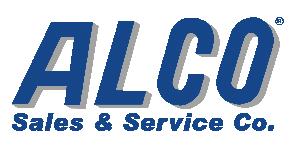




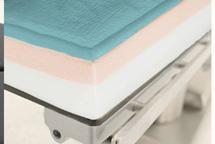
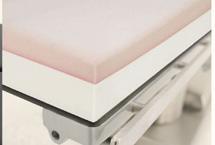
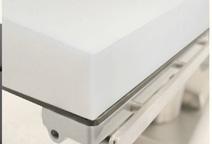




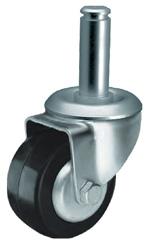


Being heard and understood is the psychological equivalence of getting air. Think about it. If you can’t get air, you will do whatever it takes to get it. Then, once you get it, you can relax a bit and move on to the next thing.
This analogy is not my own. It comes from the late Stephen Covey in his book, “The 7 Habits of Highly Effective People.” It’s a great comparison. If we’re working through a disagreement with someone, until the other person feels heard and understood, they’re likely to keep fighting to be understood and won’t have any desire to move forward until that happens.
The problem? If we’re in a disagreement with someone, we want to be understood, as well. And if both parties are striving to be understood and nobody is reaching out to do any understanding, then things come to a standstill.
By way of review, Covey’s fourth habit is Think Win-Win. It’s a cognitive step. No speaking is involved. It’s a mindset of wanting both parties to have a win, as defined by them. Habit 5, Seek First to Understand, Then Be Understood, puts shoe leather on Habit 4. It’s an order of
events. First hear the other person; then you get your turn at being heard. Habit 6 is called Synergize, and it requires ongoing consistent application of Habits 4 and 5, plus being open to solutions that haven’t yet been considered. That’s where the idea of Valuing the Differences comes into play.
Habit 5 tells us to seek first to understand, but the idea of valuing the differences takes it to a whole new level. It’s one thing to hear others. It’s something deeper to truly understand what they’re saying. But to value it? That takes phenomenal amounts of security and integrity.
In no way will I ever suggest compromising on your values. The word “values” in that phrase is a noun. Those are principles that you hold deep down in your heart. They are the standards by which you operate. But in the phrase, “Value the Differences,” the word “value” is a verb. It means giving worth to something.
Being human means we don’t have all the answers. No matter how educated and trained we might be, we can’t know everything. So when someone comes to us with a different perspective, it behooves us to truly seek to understand and yes, even place a value on what the other person is saying.
Time and again I’ve seen new and powerful solutions arise after people put their own position on pause and truly considered an opposing point of view. A value – a sense of worth – was given to that other person’s perspective, and because that idea was considered, new ideas were birthed. Pride has its place, but it can be a real obstacle to conflict resolution. Fantastically innovative and powerful solutions have emerged when we trust the process of Covey’s Habits 4, 5 and 6. Following through on those habits isn’t always easy, but they are some of the most effective principles you’ll find when it comes to working with others.
Daniel Bobinski, who has a doctorate in theology, is a bestselling author and a popular speaker at conferences and retreats. For more than 30 years he’s been working with teams and individuals (1:1 coaching) to help them achieve excellence. He was also teaching Emotional Intelligence since before it was a thing. Reach him by email at DanielBobinski@ protonmail.com or 208-375-7606.





 By Grace O
By Grace O
M ost of the people I know have very strong feelings about mushrooms – they either love them or hate them. One of the beauties of mushrooms is that they usually take on the flavor of whatever they are cooked with. If it’s garlic and olive oil, that’s what they taste like. If they’re in a spicy Asian stir-fry, they take on those flavors. Rich in B vitamins such as riboflavin, folate, thiamine, pantothenic acid, and niacin, they are also the only vegan, non-fortified dietary source of vitamin D. Mushrooms also provide several minerals that may be difficult to obtain in the diet, such as selenium, potassium, copper, iron and phosphorus.
With just 45 calories per cup, you can afford to indulge in these versatile fungi. I prefer fresh mushrooms and use organic ones whenever I can find them.
Paul Stamets, the noted mycologist (mushroom and fungi expert), is
passionate about mushrooms because he sees them as “improving the health of the population and the planet using natural means.” The premise of his very interesting book, “Mycelium Running: How Mushrooms Can Help Save the World” is that the soil contains vast networks of mycelium, the vegetative part of a fungus. It’s all pretty technical, but basically through the mycelium, a fungus absorbs nutrients from its environment in a two-stage process: First, by secreting enzymes onto a food source, such as a fallen tree or other dead plants, which breaks it down. Then, the resulting molecules and nutrients are absorbed into the mycelium and enrich the soil. As a defense against bacterial invasion, fungi have developed strong antibiotics, which also happen to be effective for us humans. Penicillin, streptomycin and tetracycline all come from fungal extracts. Mushrooms, which thrive on decaying organic material, are able to absorb nutrients and safely eliminate toxins. Here’s more on what mushrooms can do for us. They can:
• Improve Immune System Function – Mushrooms are rich in protein, fiber, vitamin C, B vitamins, calcium and minerals. There are about 50 species of medicinal mushrooms that are so rich in antioxidants they can do everything from boosting your immune function to lowering your risk of cancer, heart disease and allergies. The alpha and beta glucan molecules present in mushrooms play a major role in their beneficial effects.
• Increase Vitamin D Levels
– Consuming dried white button mushroom extract was found to be as effective as taking supplemental vitamin D2 or D3. Interestingly, Stamets’ book cites a study in which shiitake mushrooms increased in vitamin D from 110 IUs when they were dried indoors to 21,400 IUs when they were dried in the sunlight. D vitamins are essential for the body to absorb calcium and maintain bone health.
• Help with Weight Loss –Mushrooms increase enzymes with antioxidant activity. Studies
show they can be metabolic enhancers, stimulating the breakdown of sugar in blood cells. Replacing a beef patty with a hearty Portobello mushroom eliminates over 100 calories.
Not all edible mushrooms are good to eat. Some such as turkey tail or maitake (hen of the woods) are highly beneficial, but only readily available as dietary supplements. Meanwhile, here are a number of delicious mushroom varieties that you can find fresh in the produce section of your local supermarket or online in dried form.
stage cancer patients. Reishis are natural stress reducers – helpful to those under physical and emotional stress. You can find them online in dried form and in supplement capsules.
Shiitake – One of the most widely cultivated and tastiest mushrooms, shiitakes contain a chemical called lentinan, approved as an injectable drug in Japan to help prevent damage from anti-cancer drugs. Shiitake mushrooms help increase the activity of T-cells which stimulates the immune system. The theory is that, because they are fungi, they trick the immune system into thinking it’s under attack. Japanese studies suggest that the consumption of shiitakes lowers blood cholesterol by 45% due to an ingredient called eritadenine.
Cremini – These are the common white button mushrooms found in most supermarkets. According to Regina Wilshire, N.D., a 5-ounce serving contains 50% of RDA for the cancer-fighting trace mineral selenium, 40% of RDA for riboflavin, 35% of copper, 30% of niacin, 20-25% of pantothenic acid, phosphorous, and zinc, plus 10-15% of manganese and thiamin.

Reishi – In traditional Chinese medicine, reishi mushrooms are considered to have many health and curative properties. The Sloan-Kettering Cancer Center website suggests that reishi extract stimulates the immune system. The site also states that there have been clinical studies indicating that it increases antioxidant capacity and enhances immune responses in advanced-
Portobello – These are the mature cremini mushrooms and are found in most supermarkets. They have a meaty texture and an intense, earthy flavor. They are low in calories and high in pantothenic acid, niacin, folate, thiamin and B vitamins, which are important for a healthy metabolism, skin, liver and hair health.
Whether you love eating mushrooms or prefer taking them as supplements, one thing is certain – they are healthy little powerhouses of immunity boosters, antioxidants, vitamins and minerals.


– Grace O is the creator of FoodTrients, a unique program for optimizing wellness and longevity. She is the author of three award-winning cookbooks. Her latest cookbook is “Anti-Aging Dishes from Around the World.” Learn more at FoodTrients.com.

mexican breakfast scramble
INGREDIENTS:
• 1 Minute Jalapeno Rice Cup

• 1 egg, lightly beaten
• 2 tablespoons salsa
• 2 tablespoons queso fresco
By Family featuresNo matter where you go around the globe, there is one ingredient you’ll likely find is an integral part of many cultures and cuisines: rice.
Grown on almost every continent, this staple ingredient is a large part of meals around the world, which means there are nearly endless varieties and recipes to try. However, you don’t need to go on vacation to try authentic-tasting international food; easy-to-make versions of popular dishes from around the globe can be made right at home in mere minutes.
Much like other cuisines around the world, Middle Eastern cooking uses rice almost every day. A Turkish and Arab mixed dish, shawarma is now a global street food. Traditional Persian rice uses a variety of spices like turmeric, ginger and cardamom with dried fruits and nuts.
Mexican Breakfast Scramble
Prep time: 2 minutes
Cook time: 2 minutes
Servings: 1
1. Heat rice according to package directions.
2. In small microwave-safe dish, combine egg, salsa and rice.

3. Microwave 1 minute. Stir in cheese; microwave 30 seconds.
Serving Suggestion: For meal to go, wrap scramble in warm tortilla.
Latin American recipes vary from country to country and region to region, but rice is essential on the side or as part of the main dish across the board. A quick and easy morning meal, this Mexican Breakfast Scramble is ready in 4 minutes. Aiding the short prep time, Minute Jalapeno Rice Cups are ready in just 1 minute and can help spice up dishes with a tasty blend of onion, green peppers and jalapenos.
With bold flavors, few things say southern comfort quite like Louisiana cooking. Bring the taste of New Orleans to your kitchen with rice-based dishes like gumbo or jambalaya, or by pairing rice with another popular Cajun pastime – a classic shrimp boil.
Find more quick and easy international recipe ideas at MinuteRice.com.










Everyone likes FREE stuff and we want to hear from our readers! It is a win-win for everyone involved. Please take a moment to tell us what you like about OR Today magazine.

You could win a $25 gift card! Simply go to ORToday.com/Contest and fill out the short form for your chance to win!


“Never doubt that a small group of thoughtful, concerned citizens can change world. Indeed it is the only thing that ever has.”
— Margaret Mead
QUOTE

